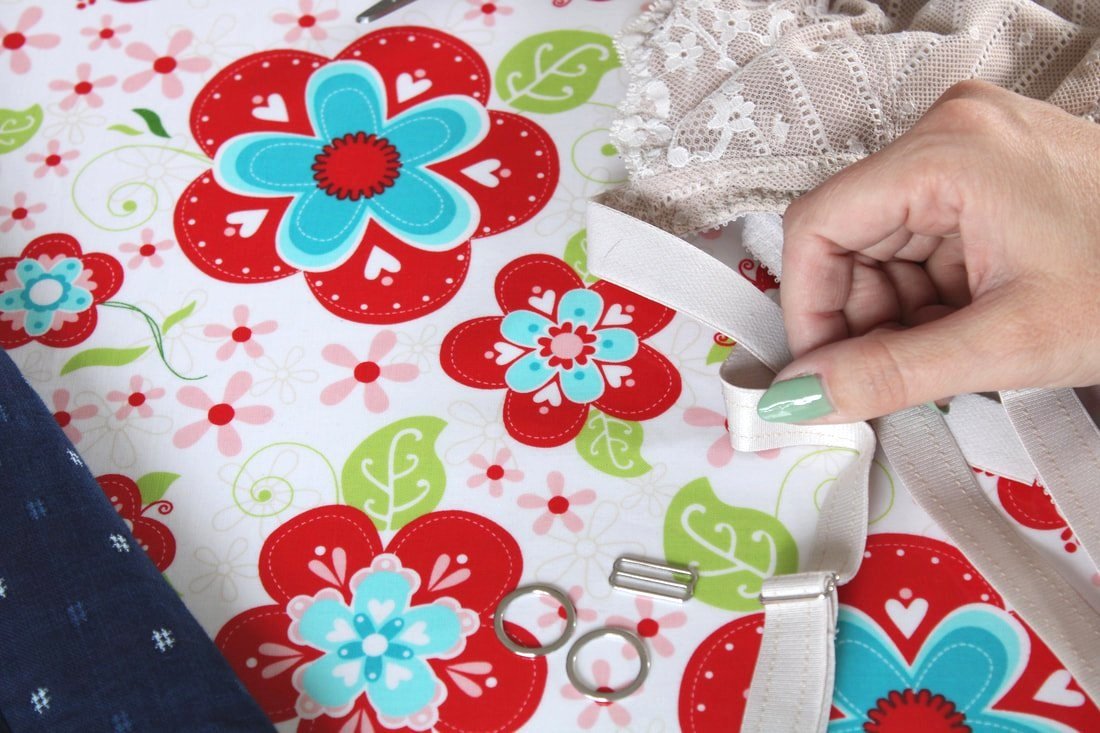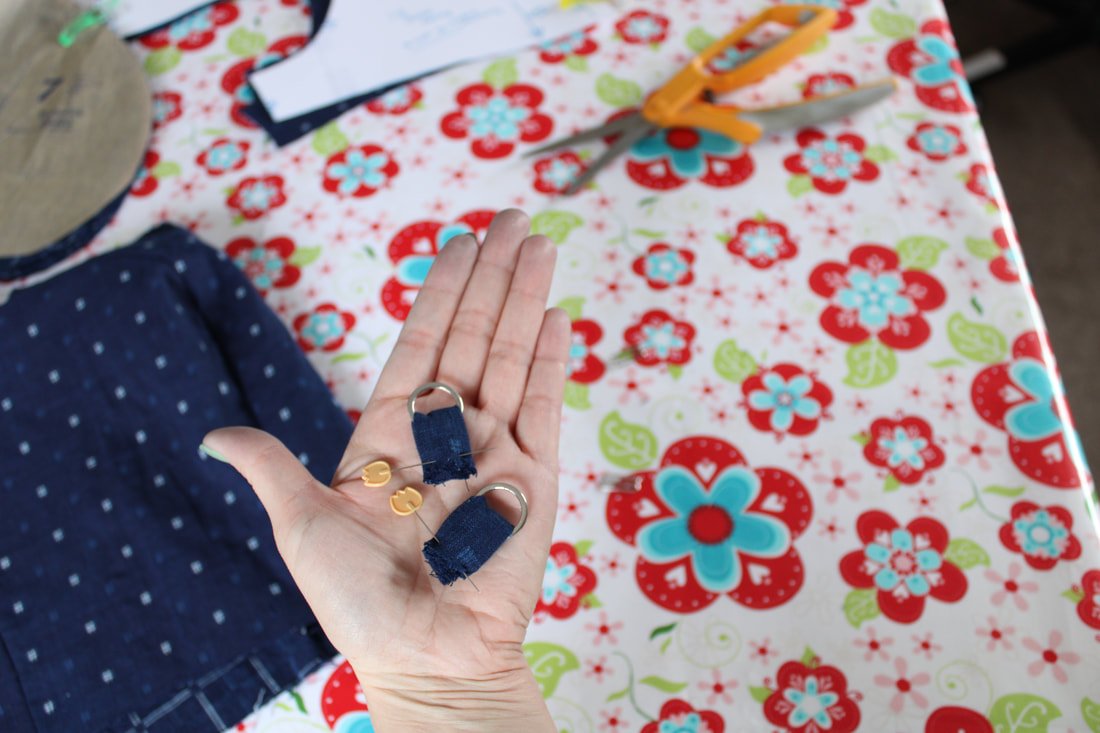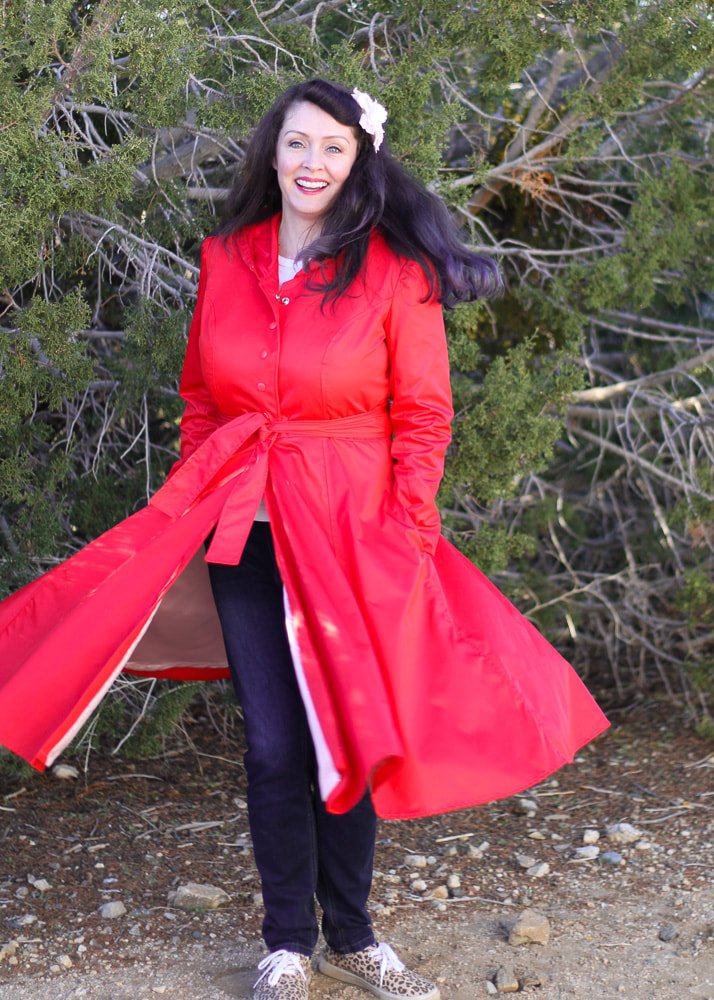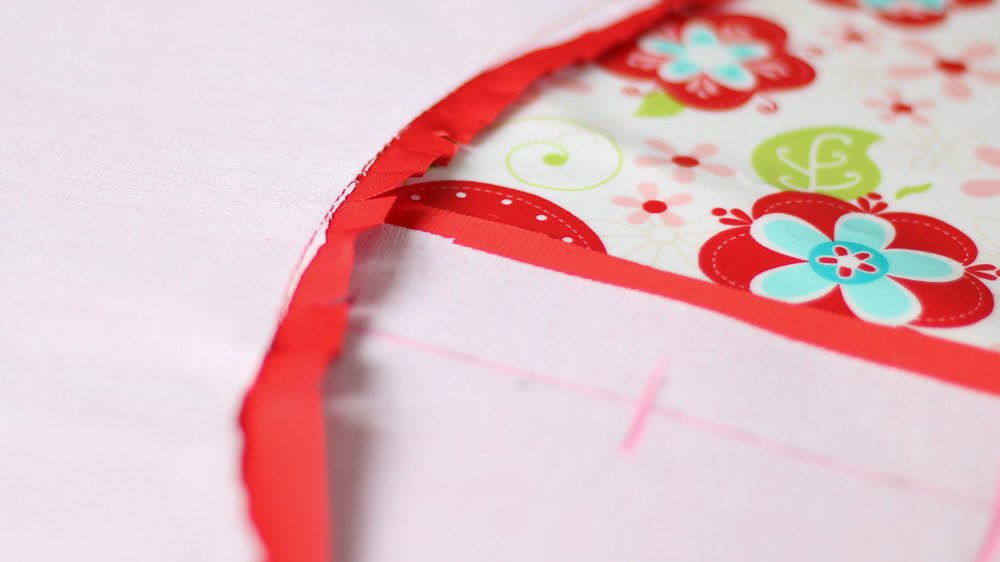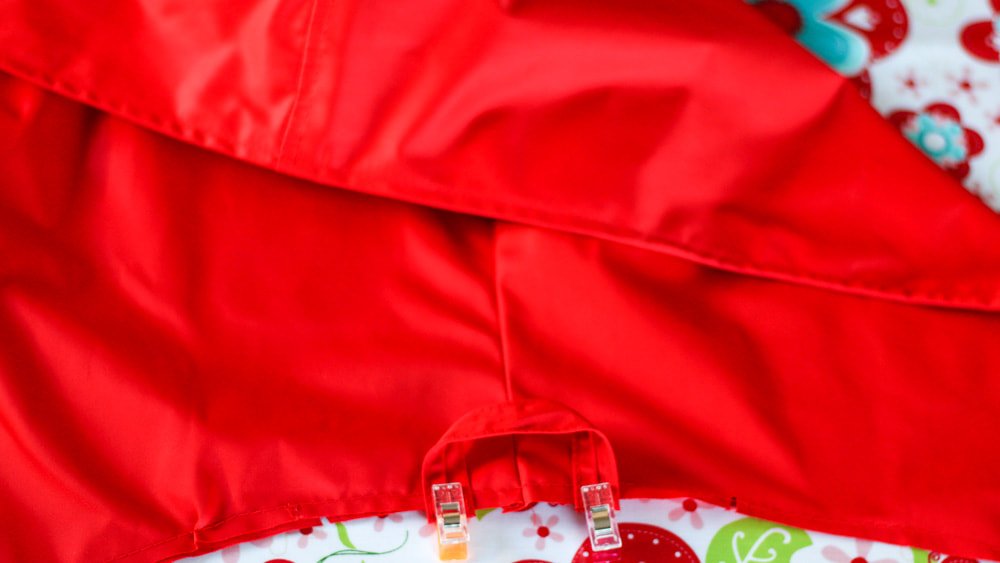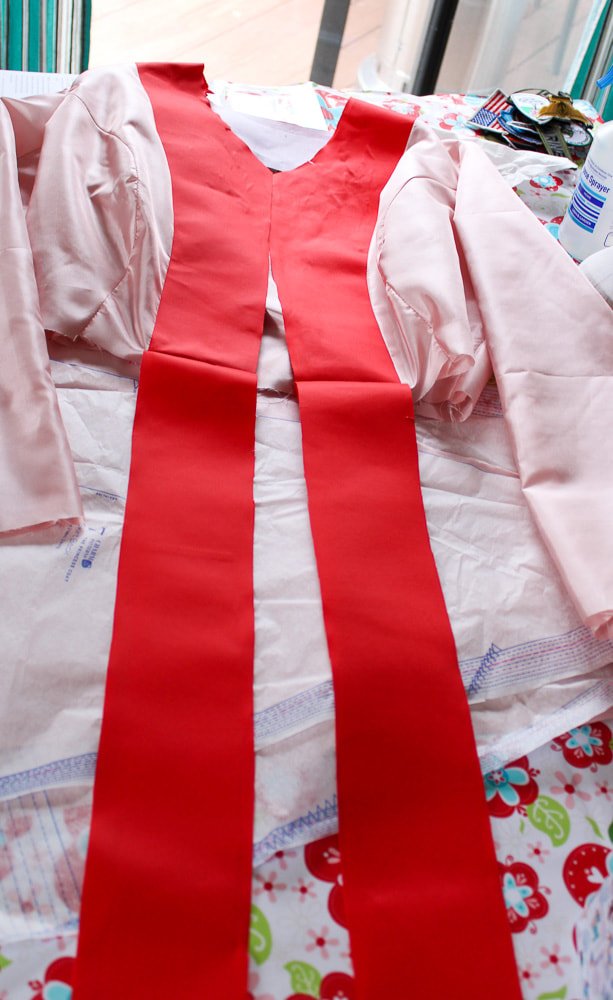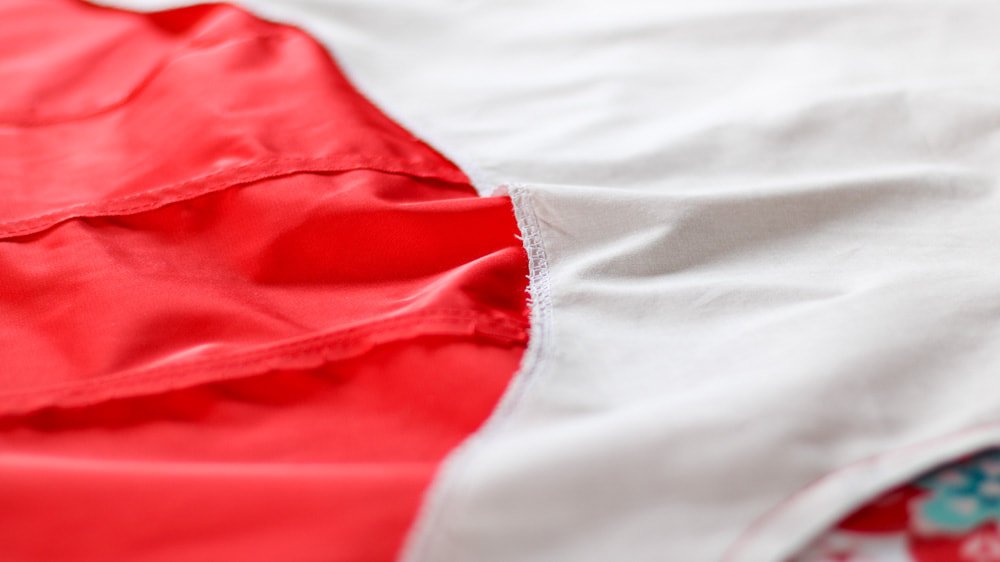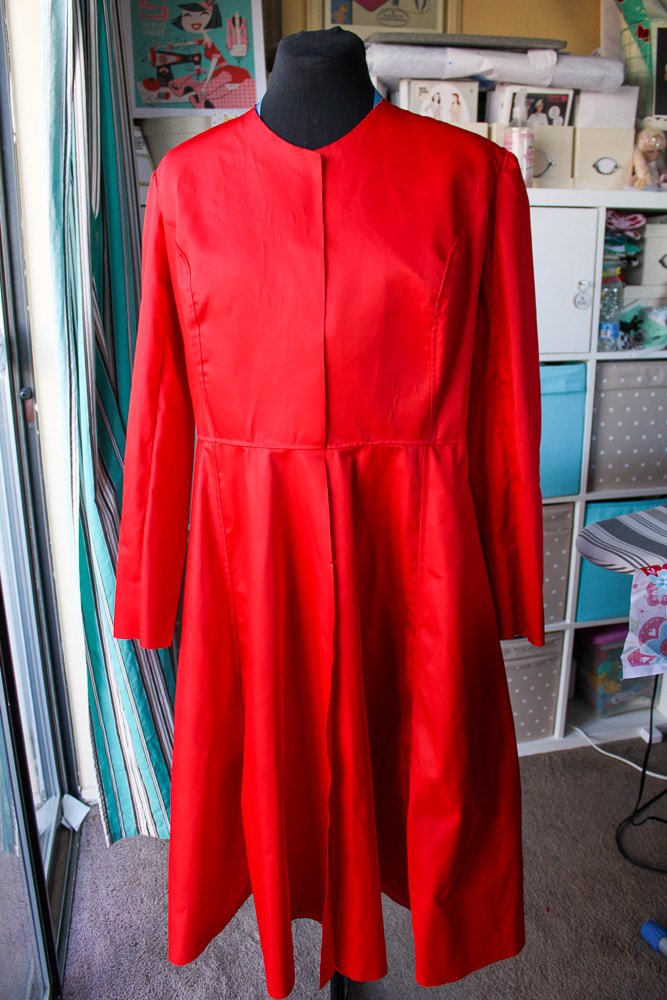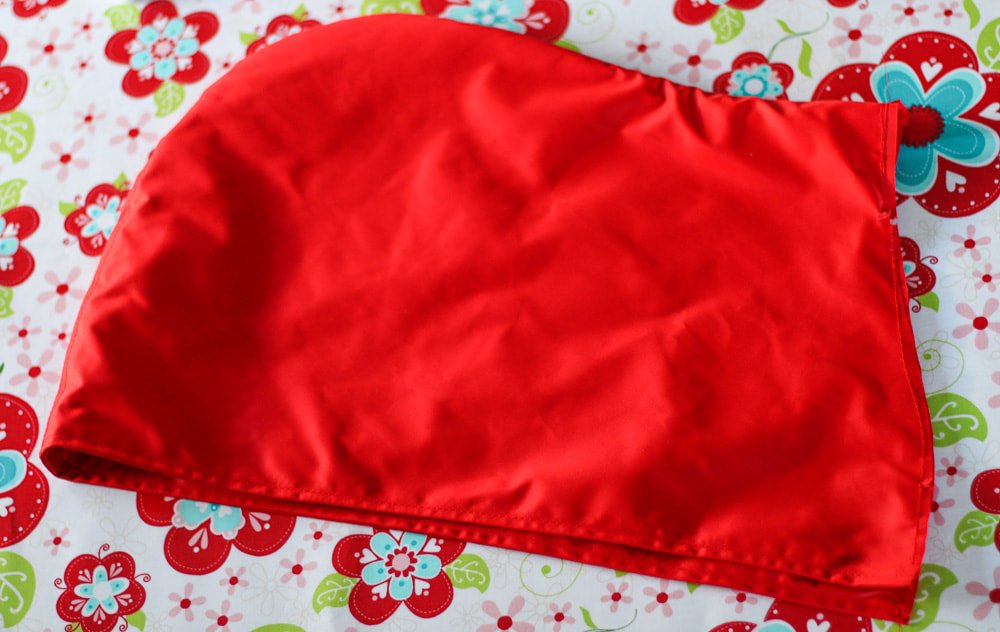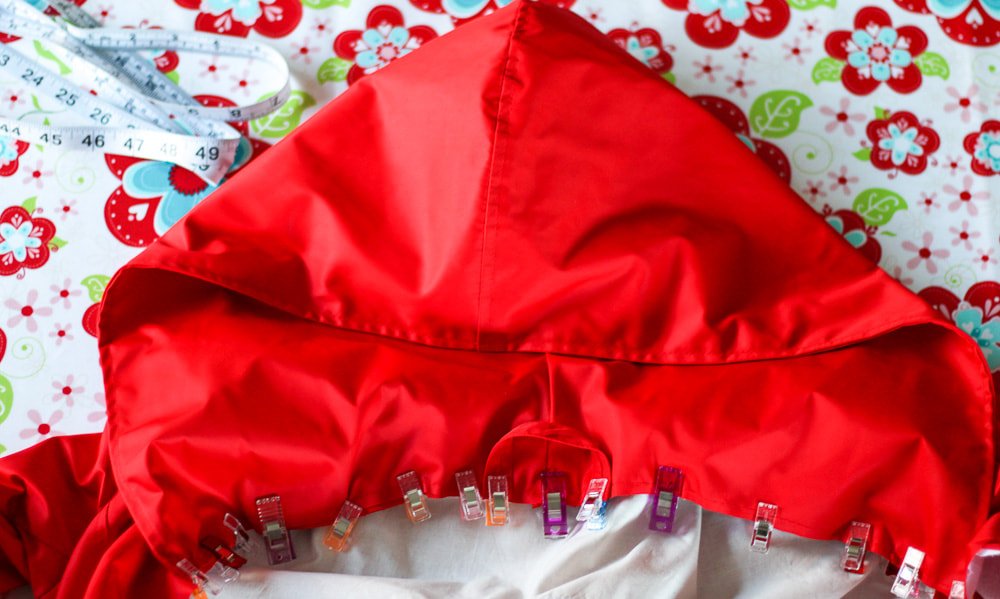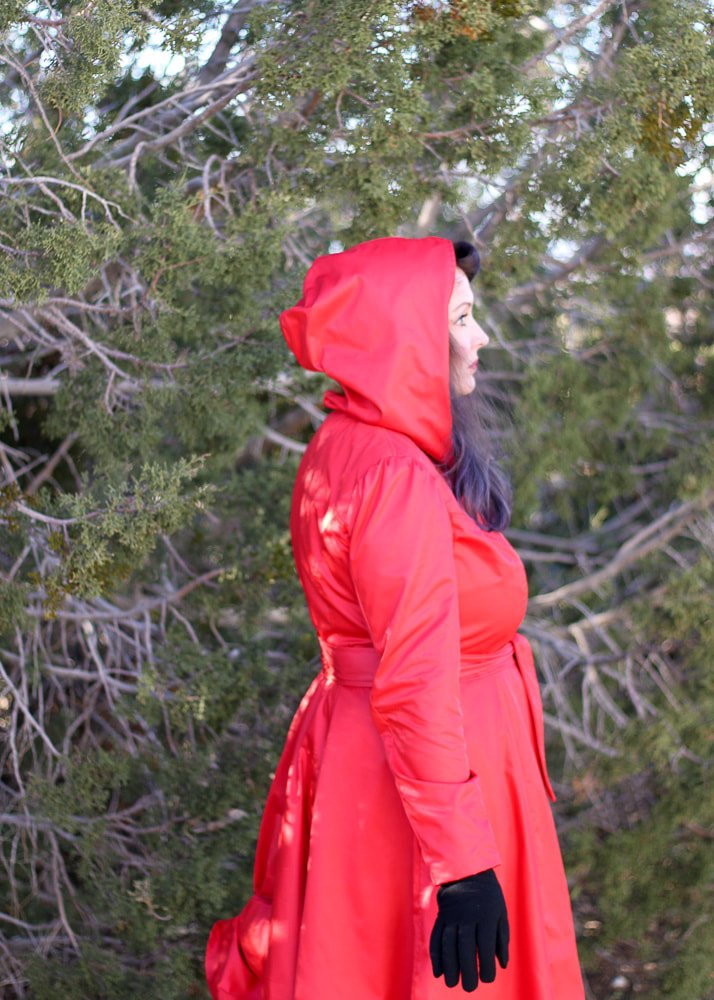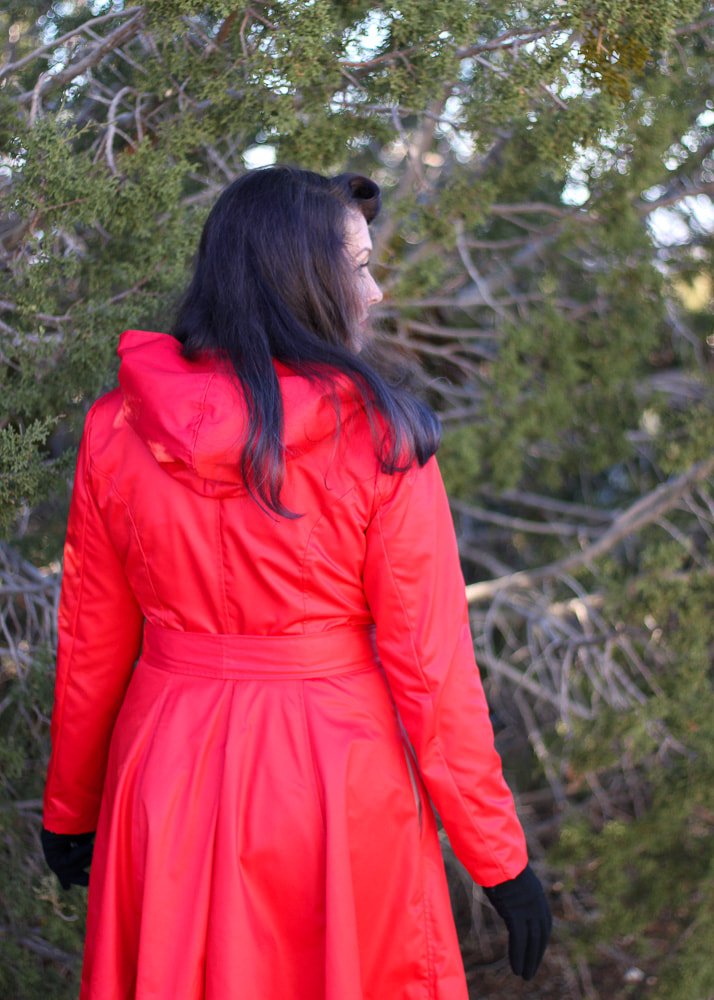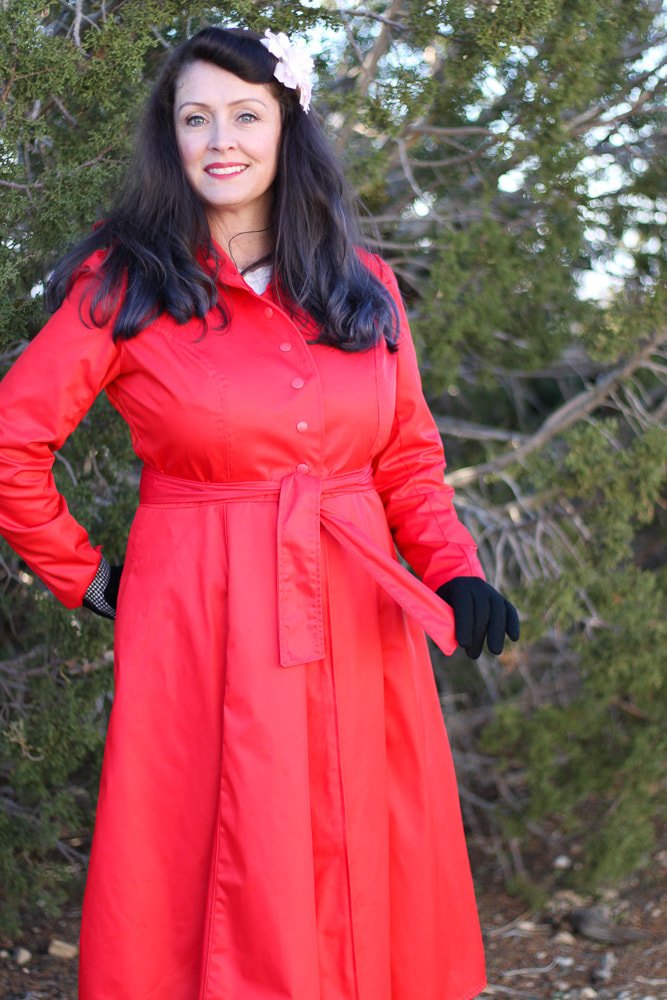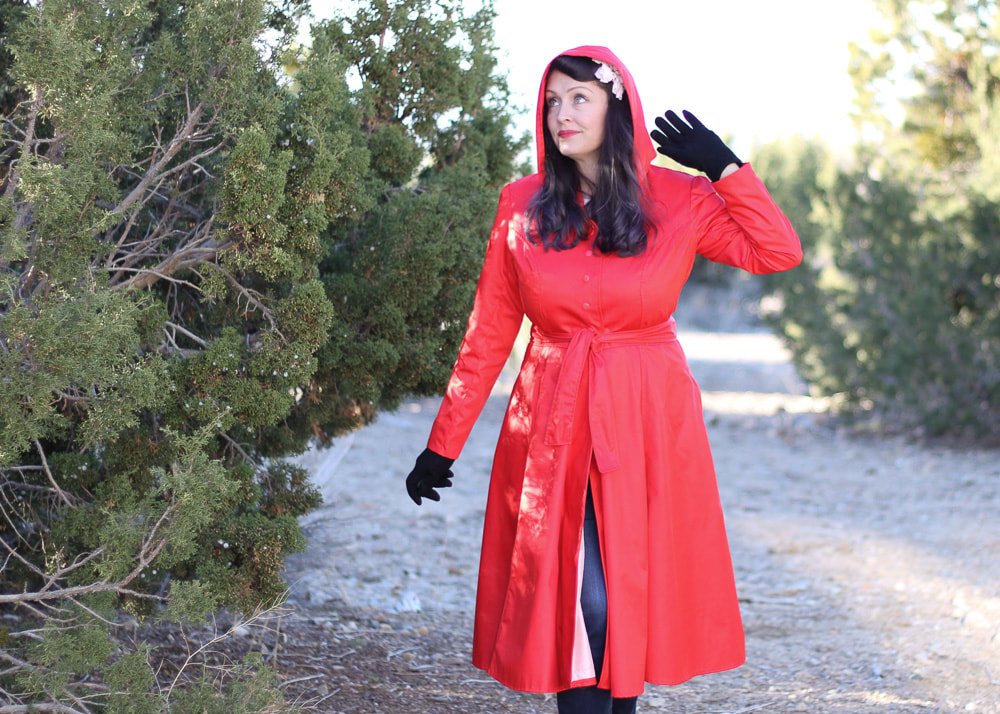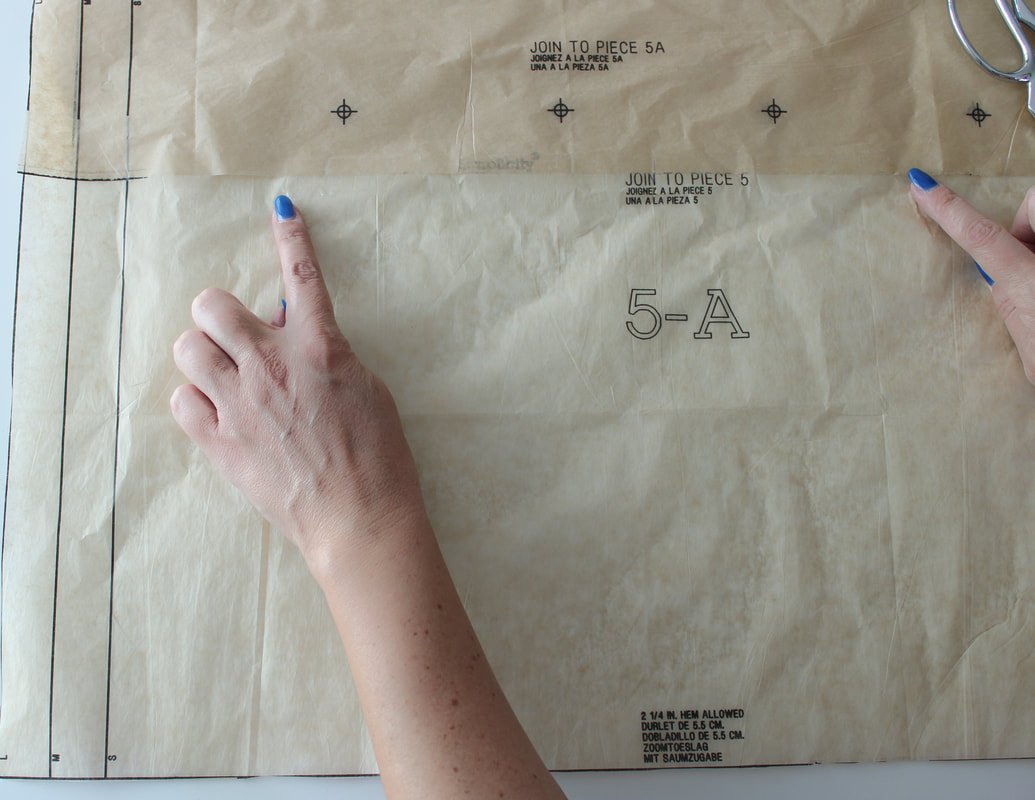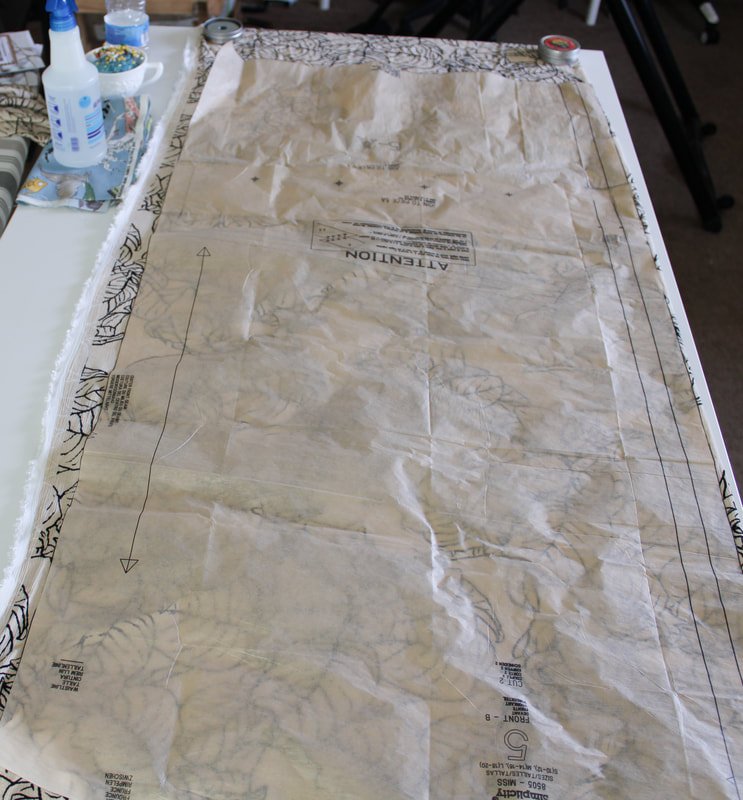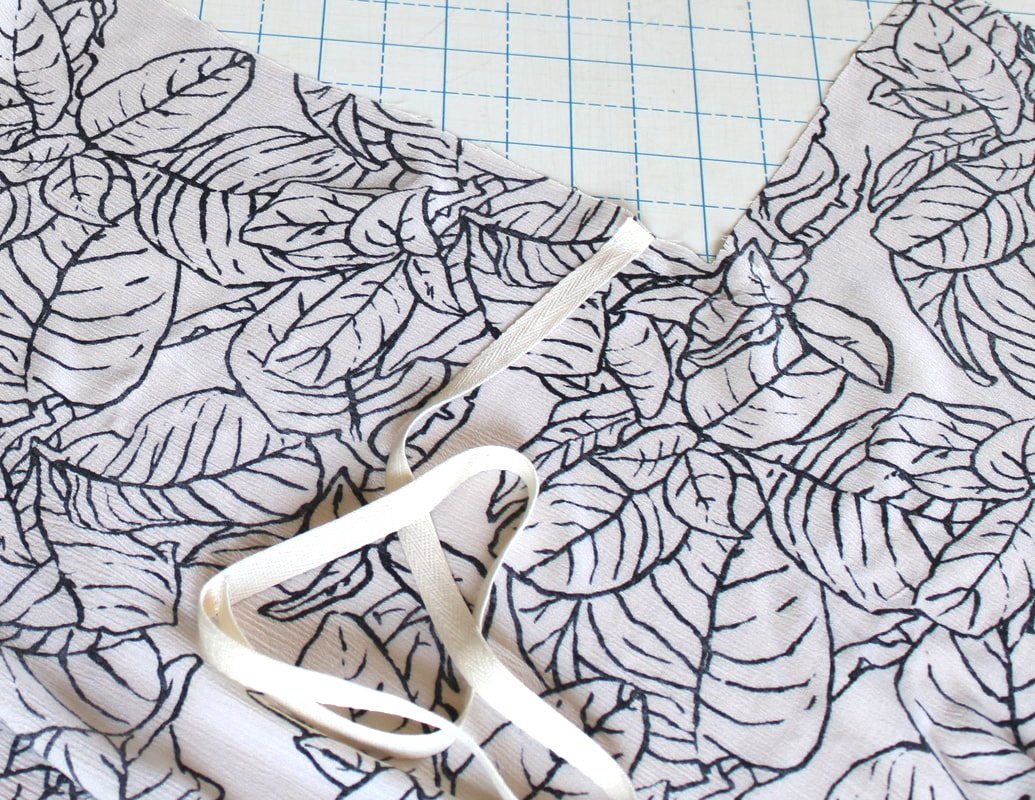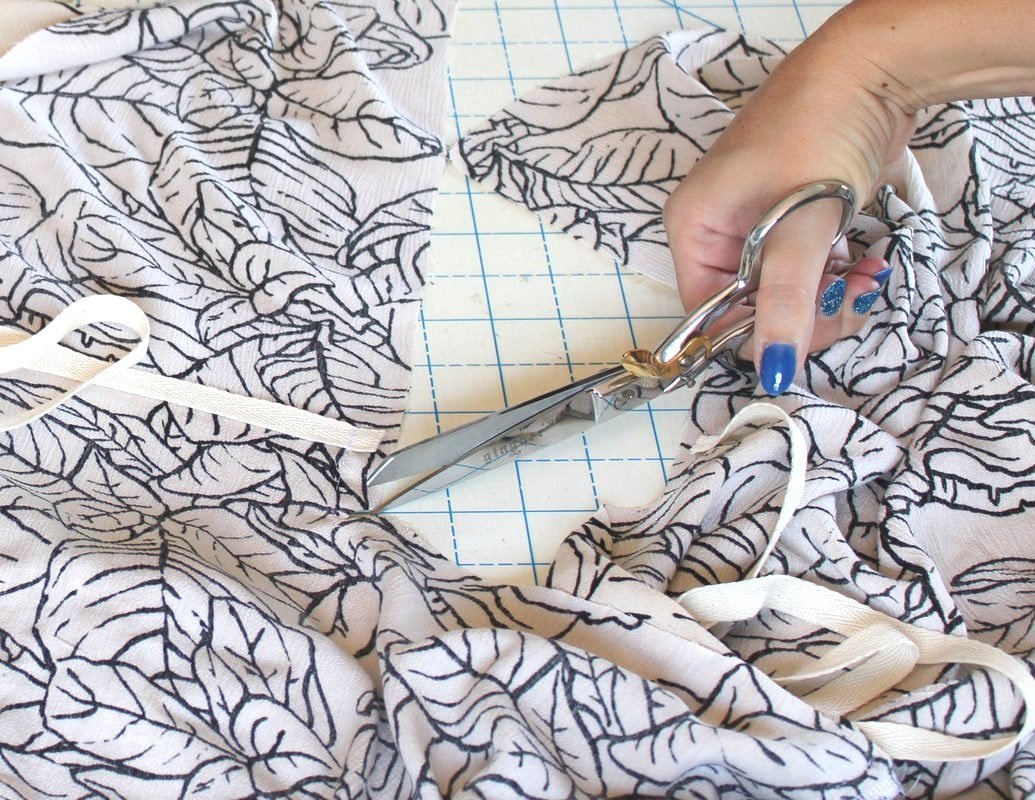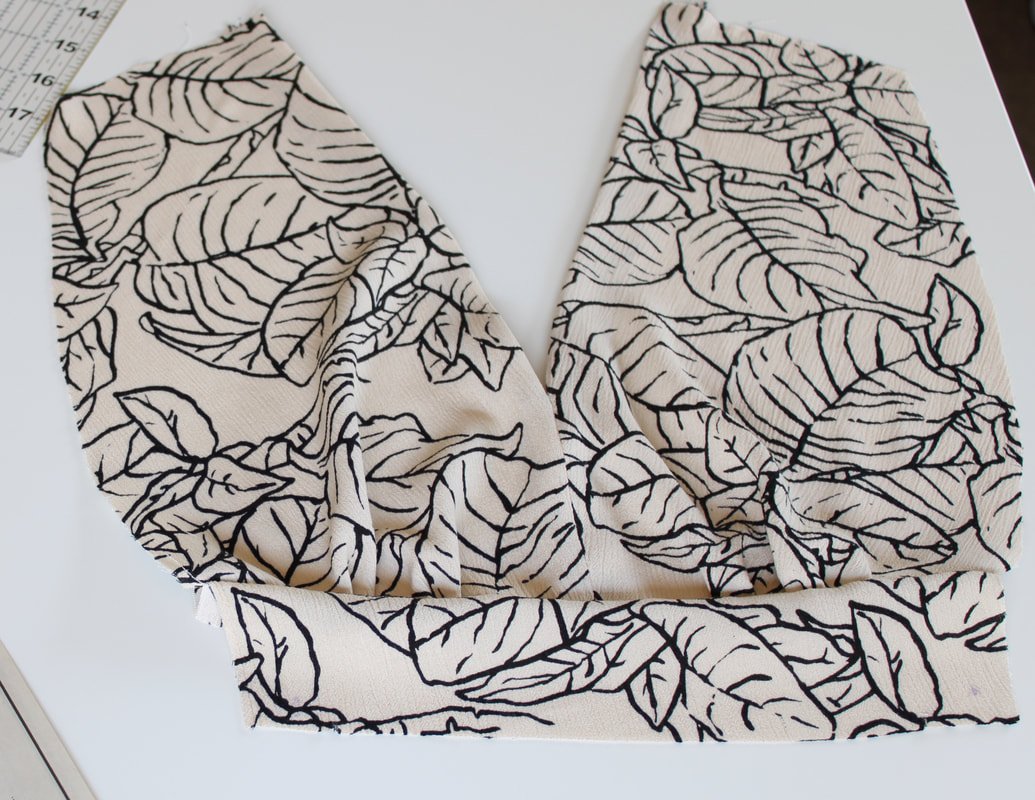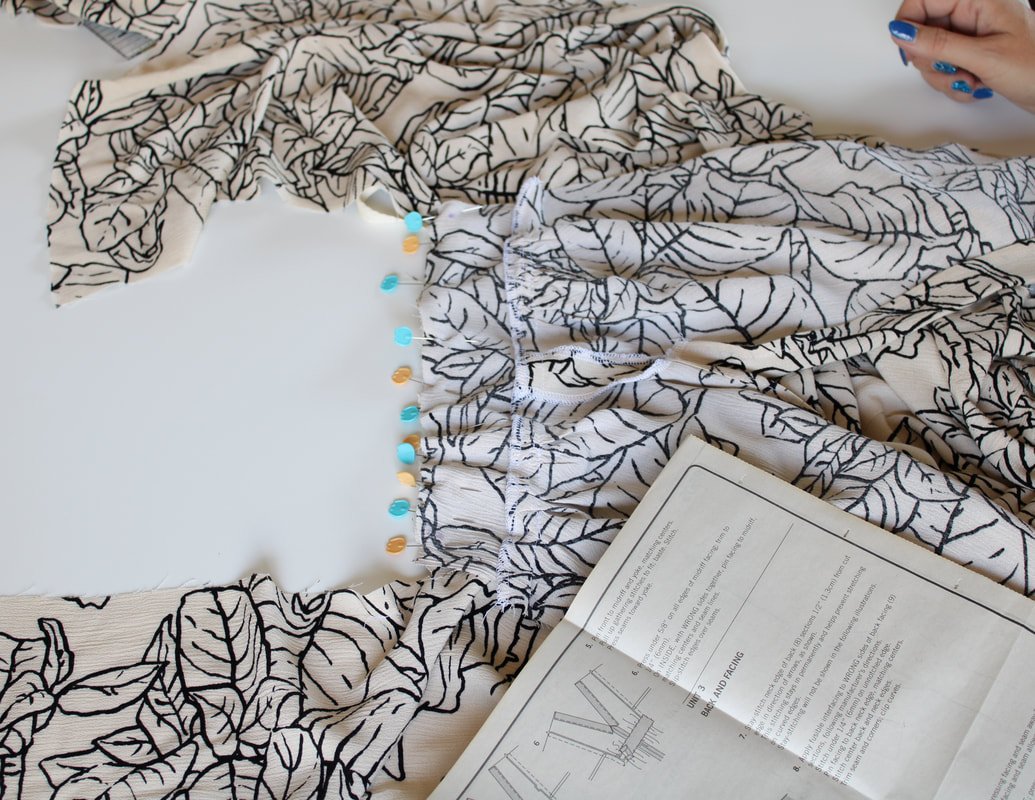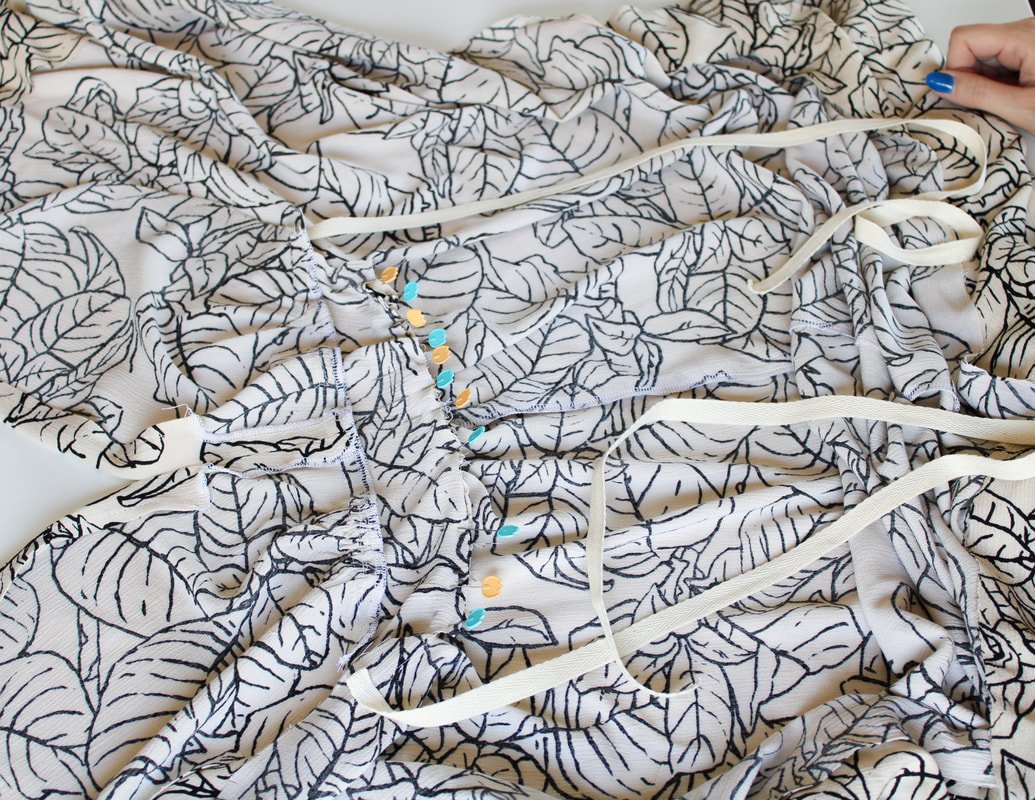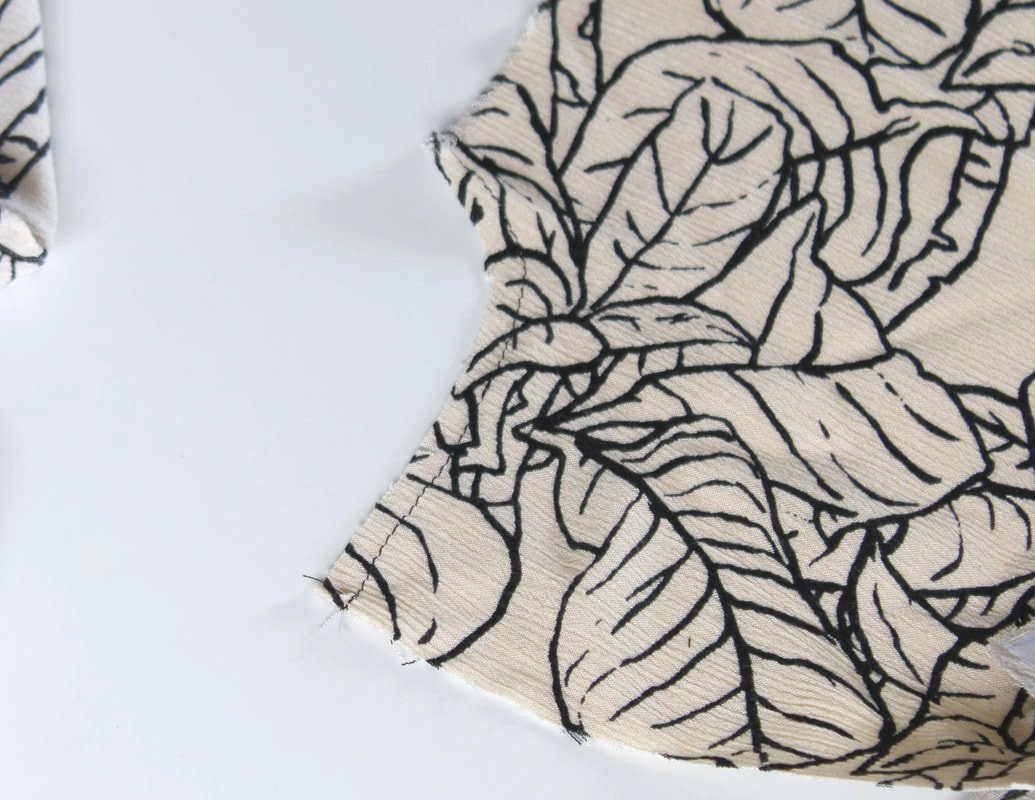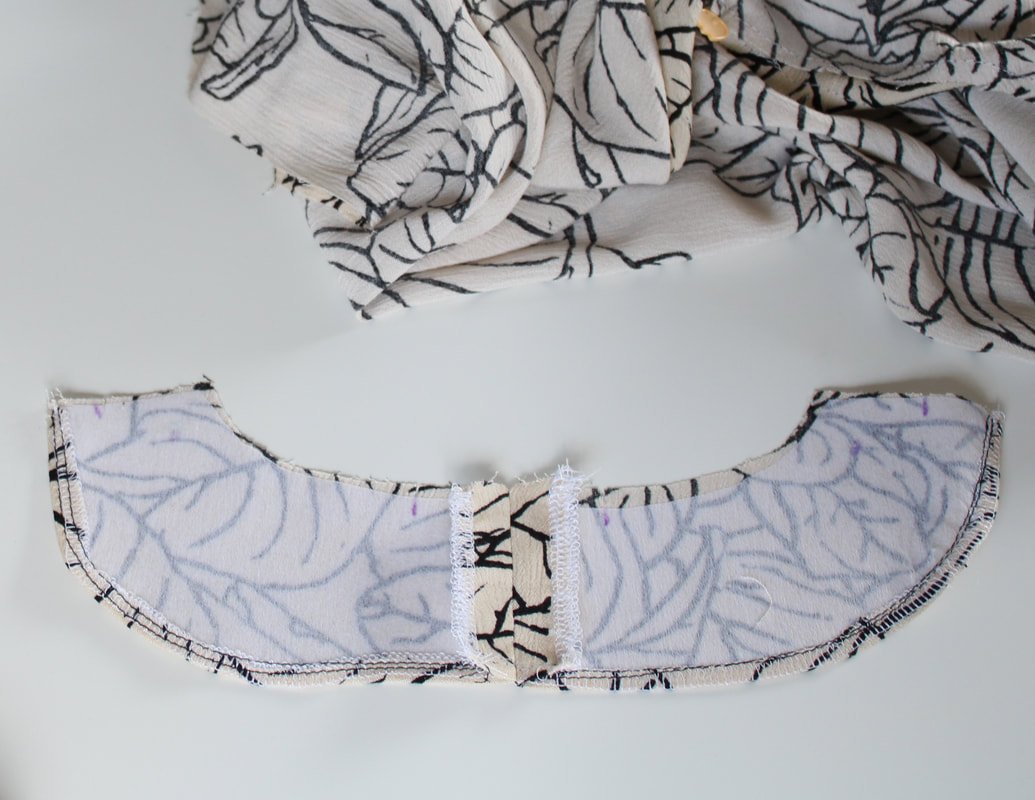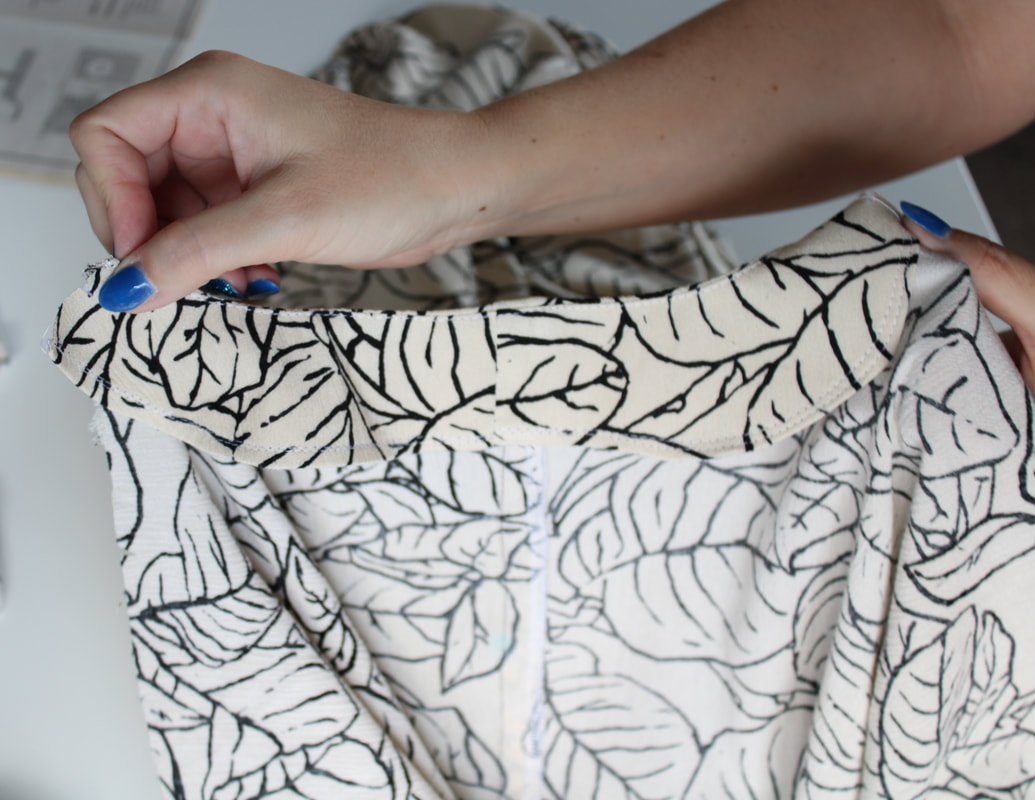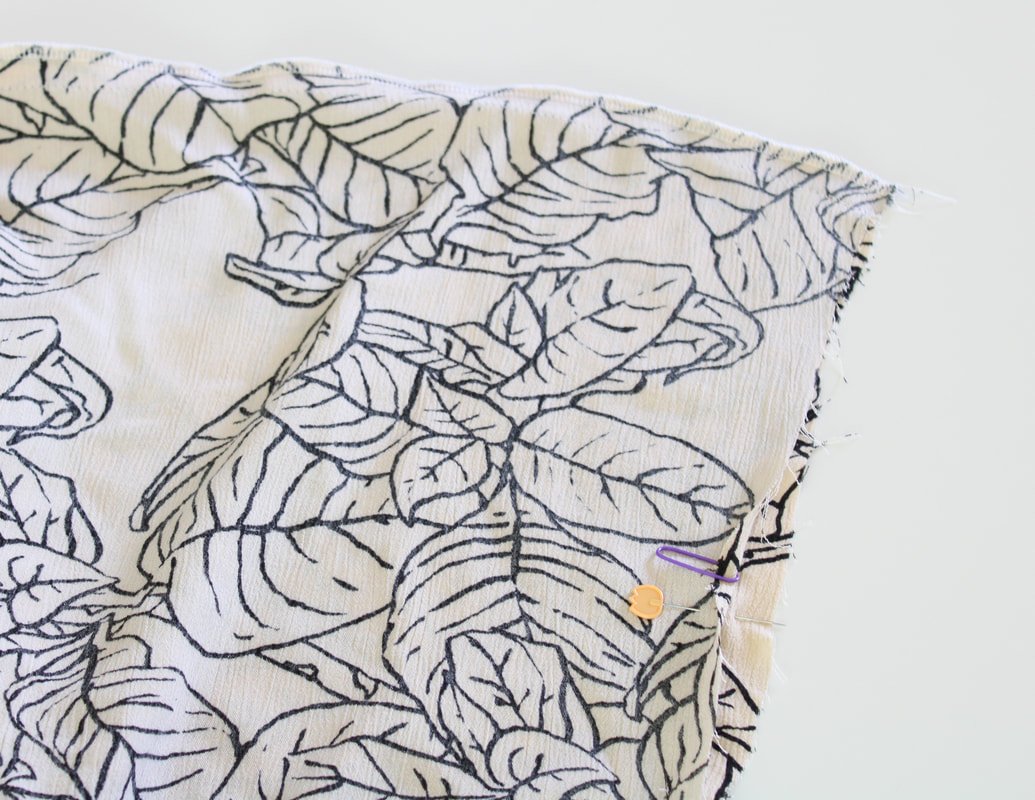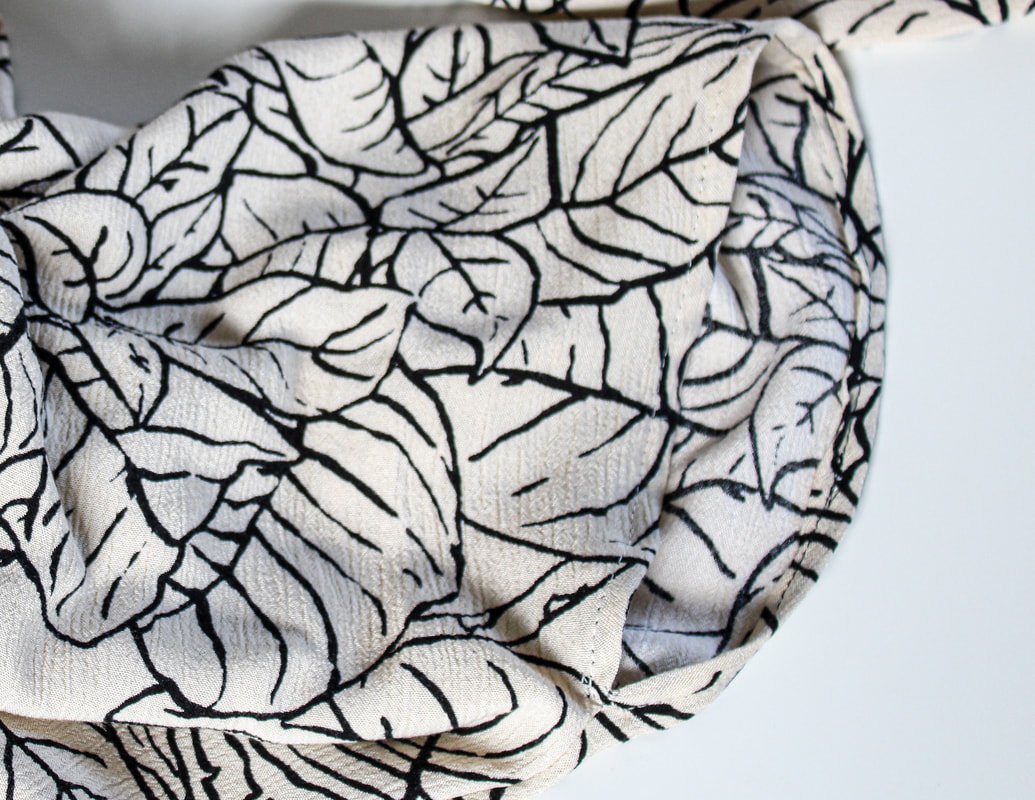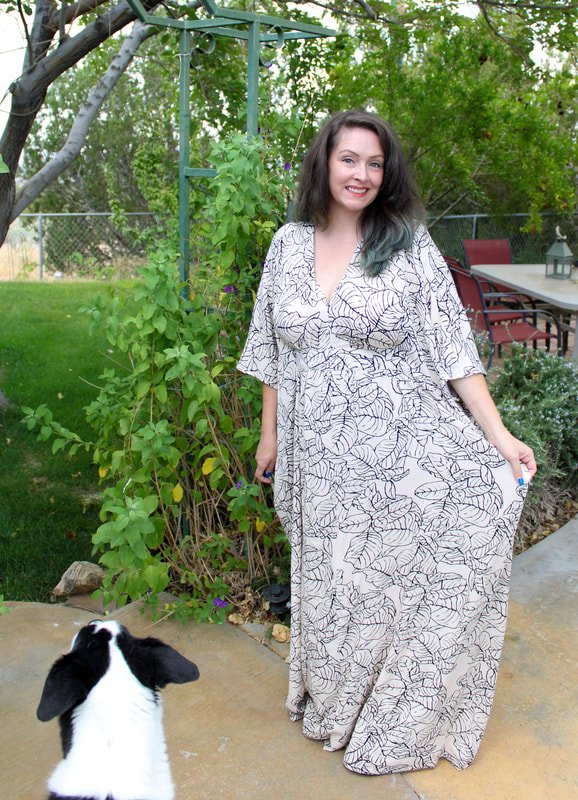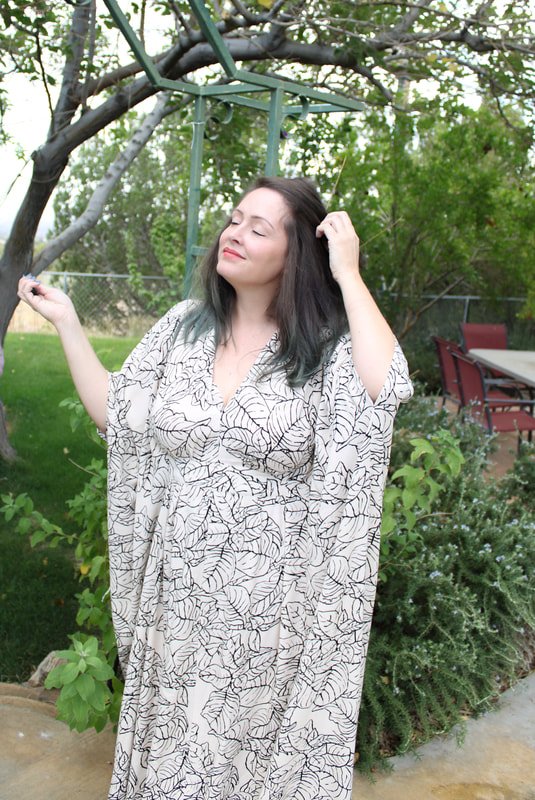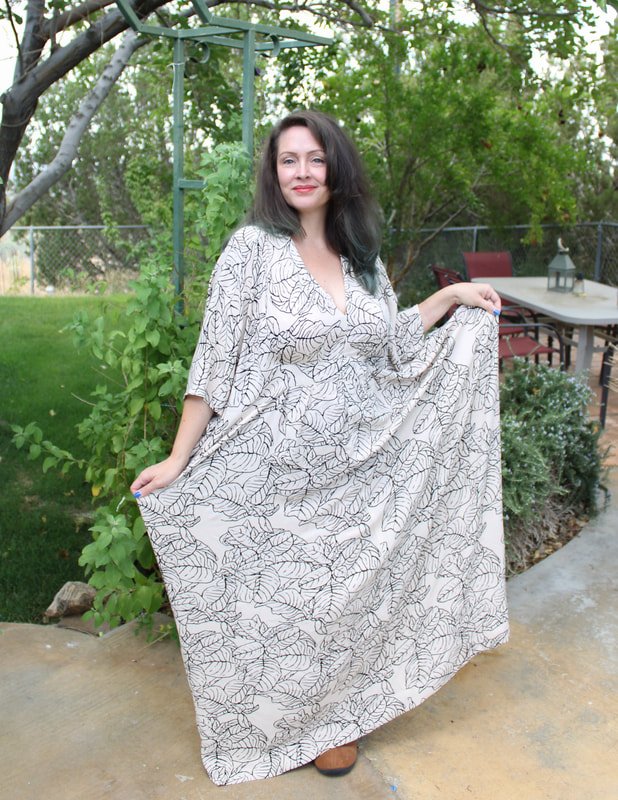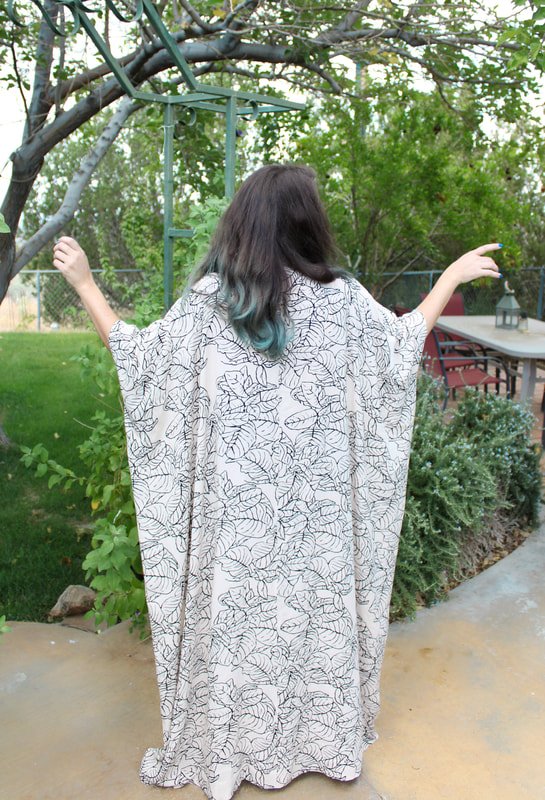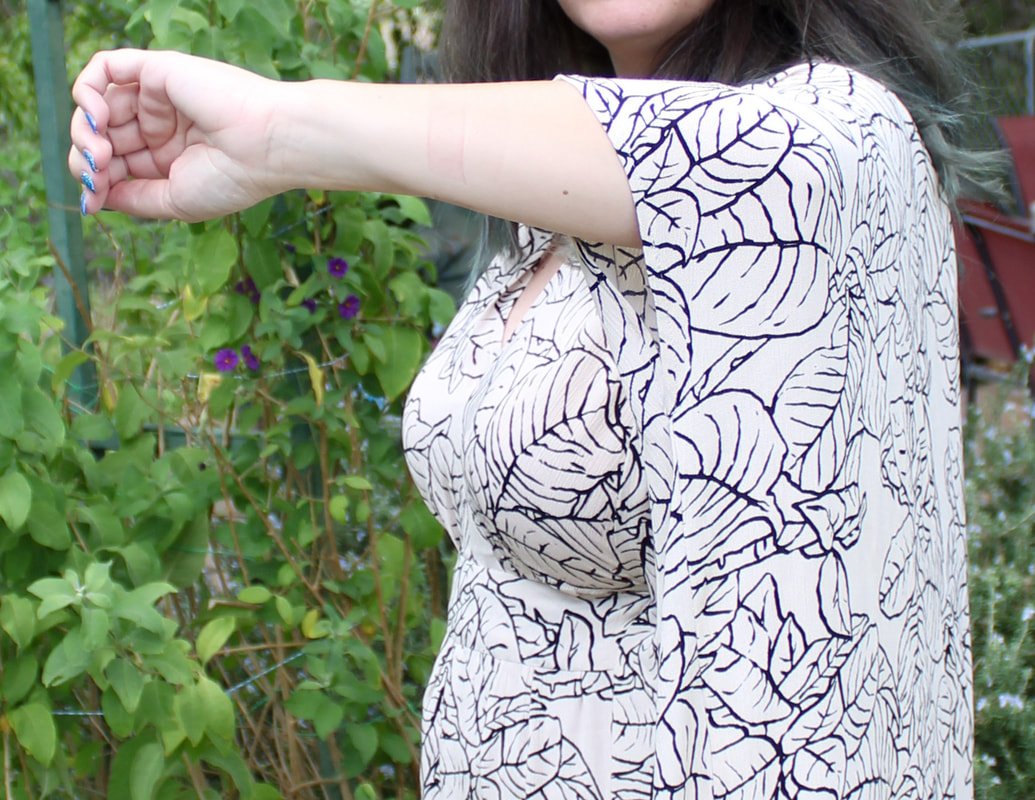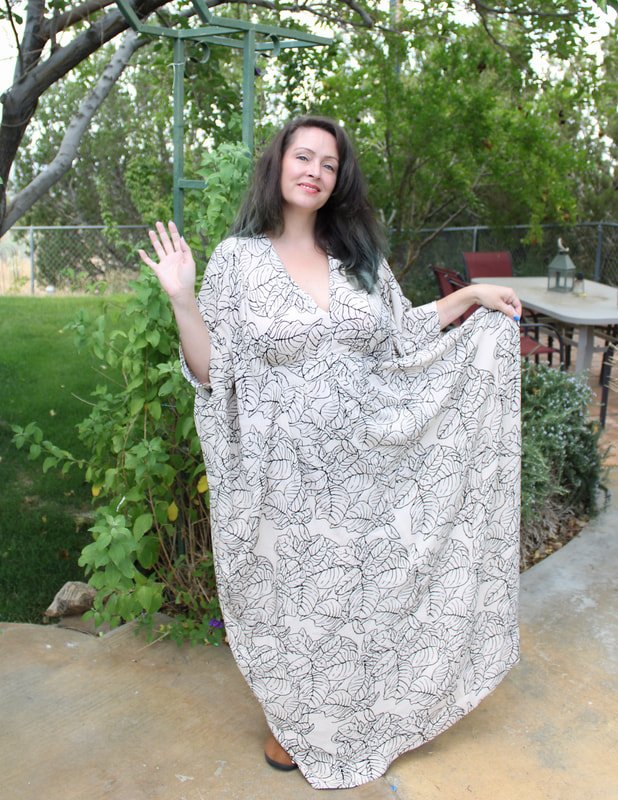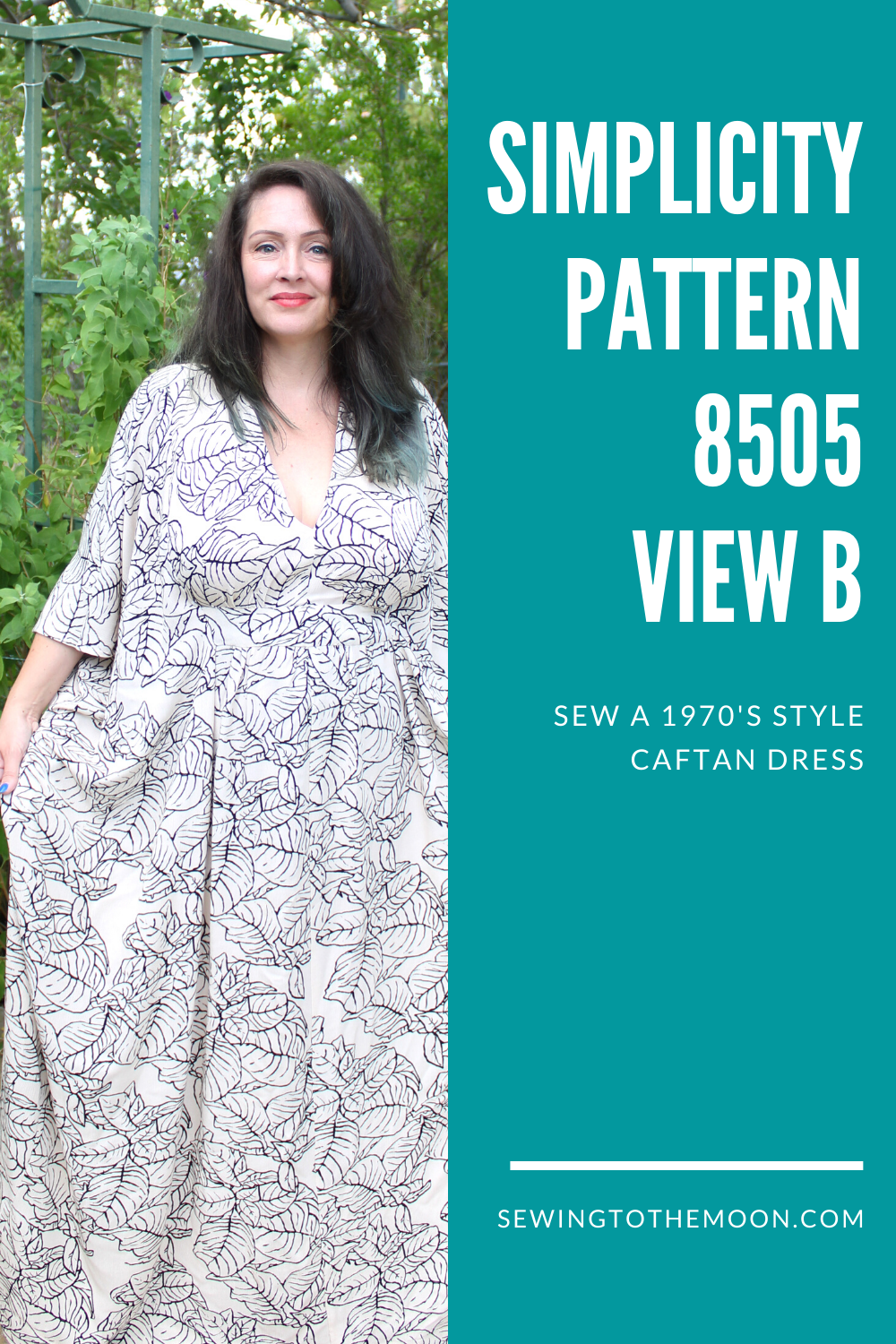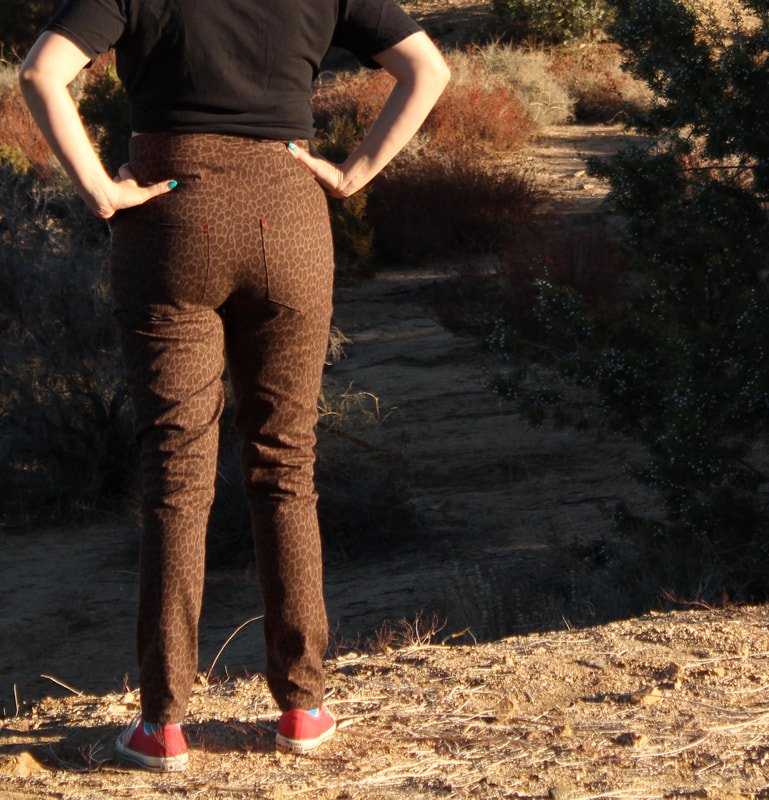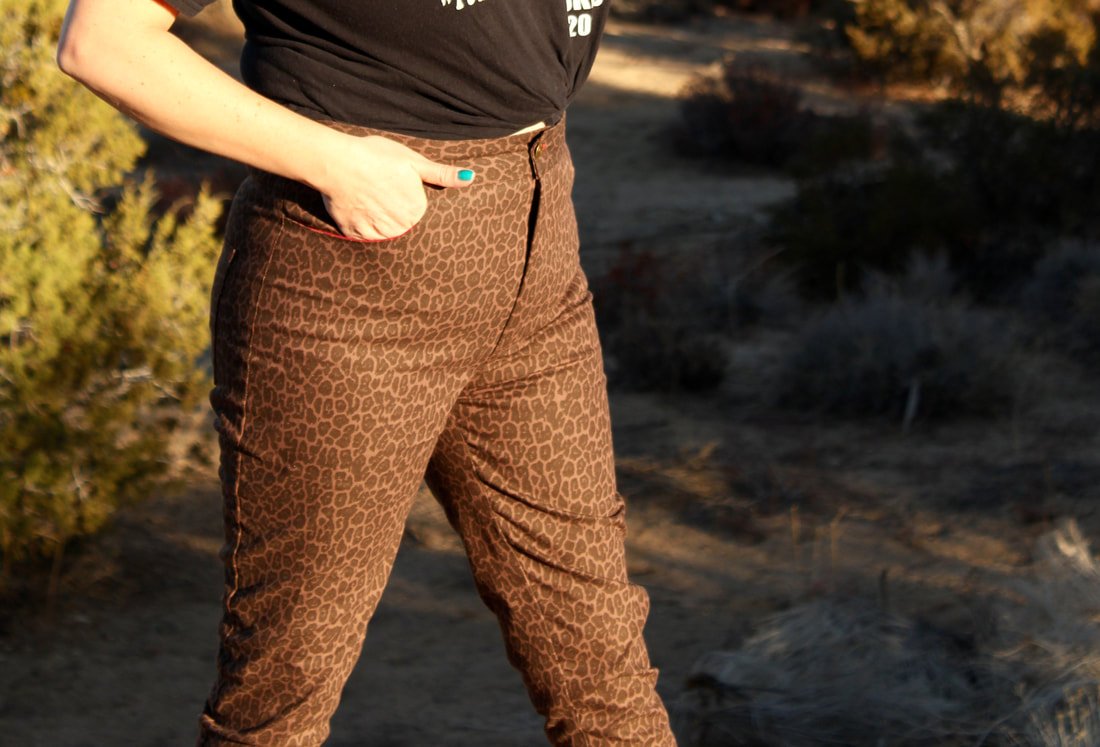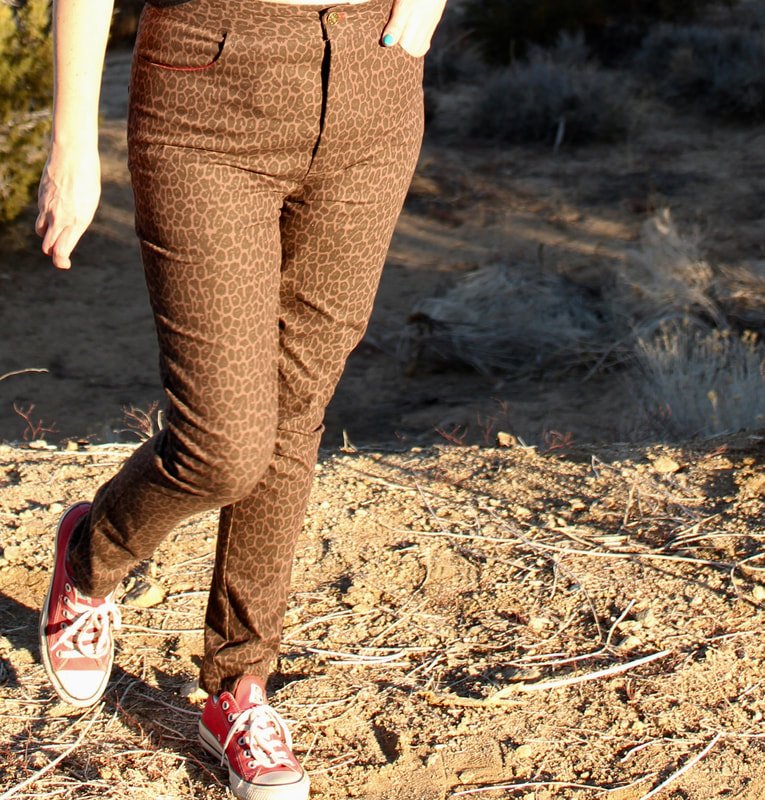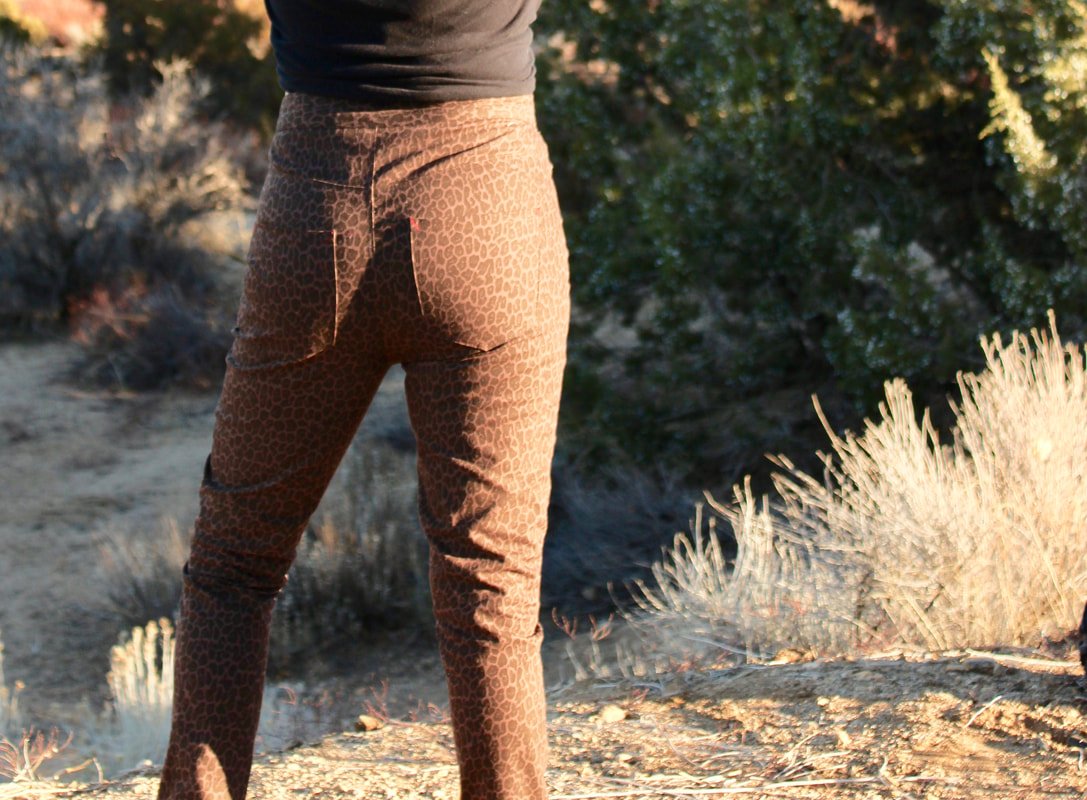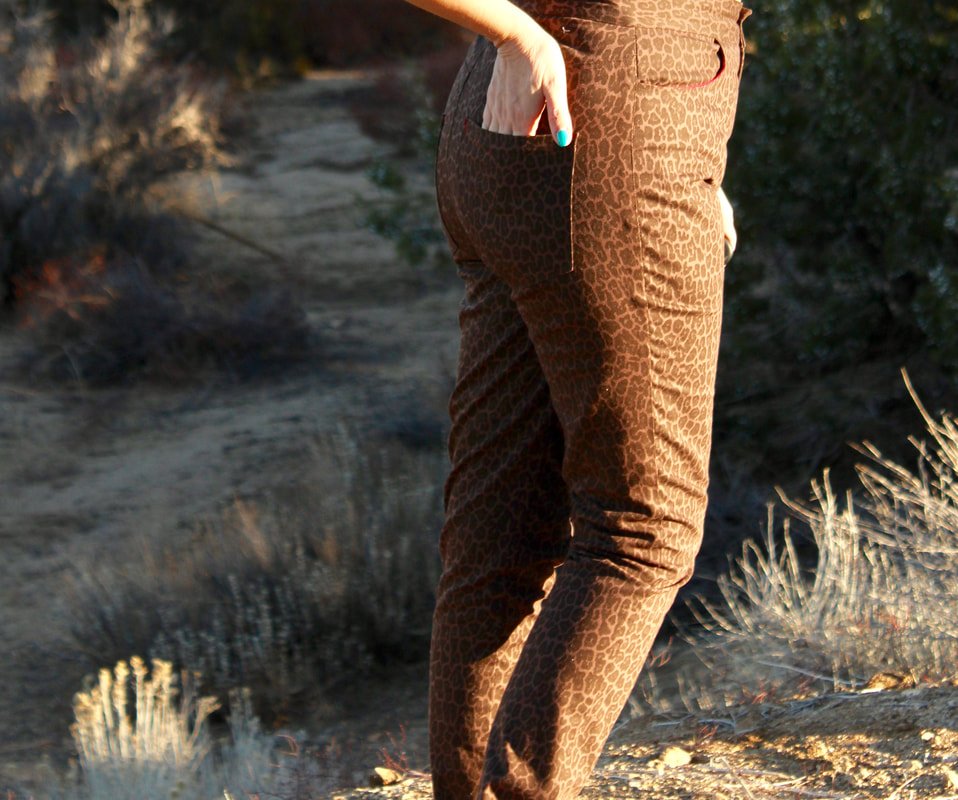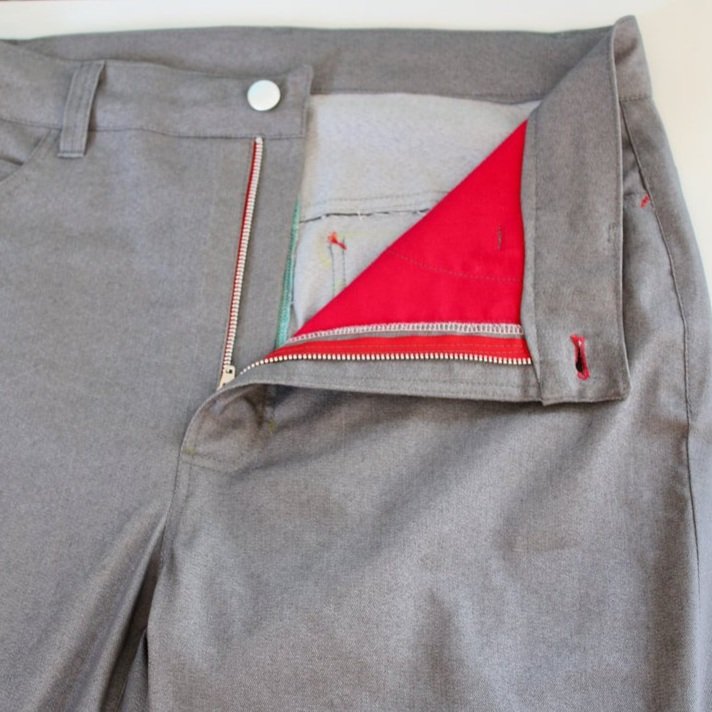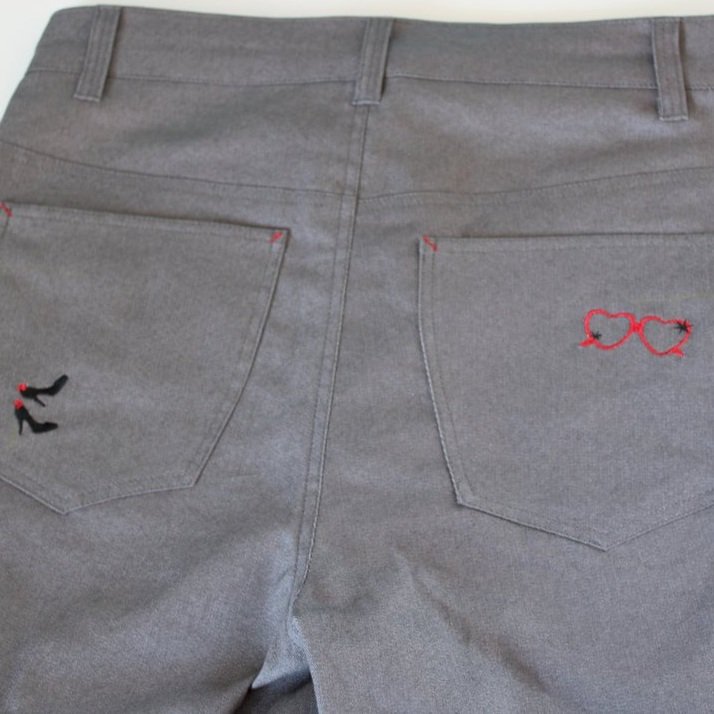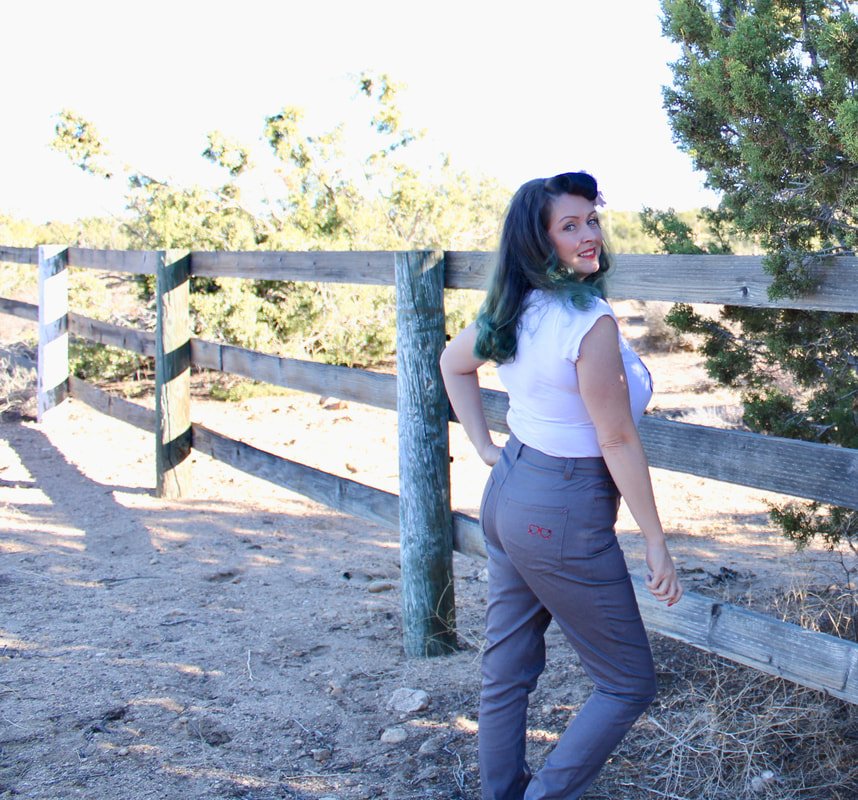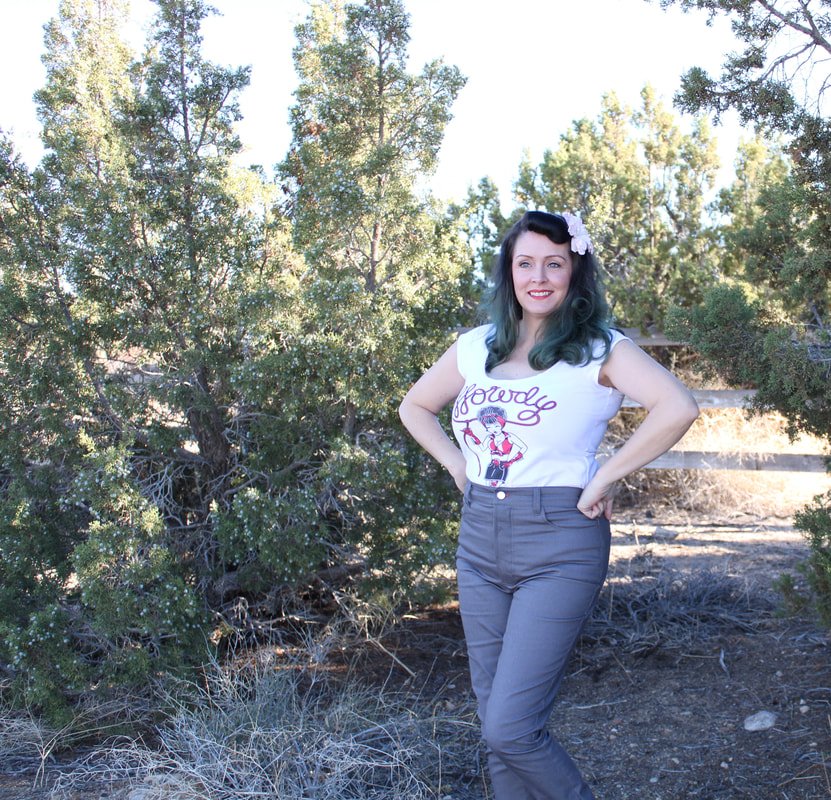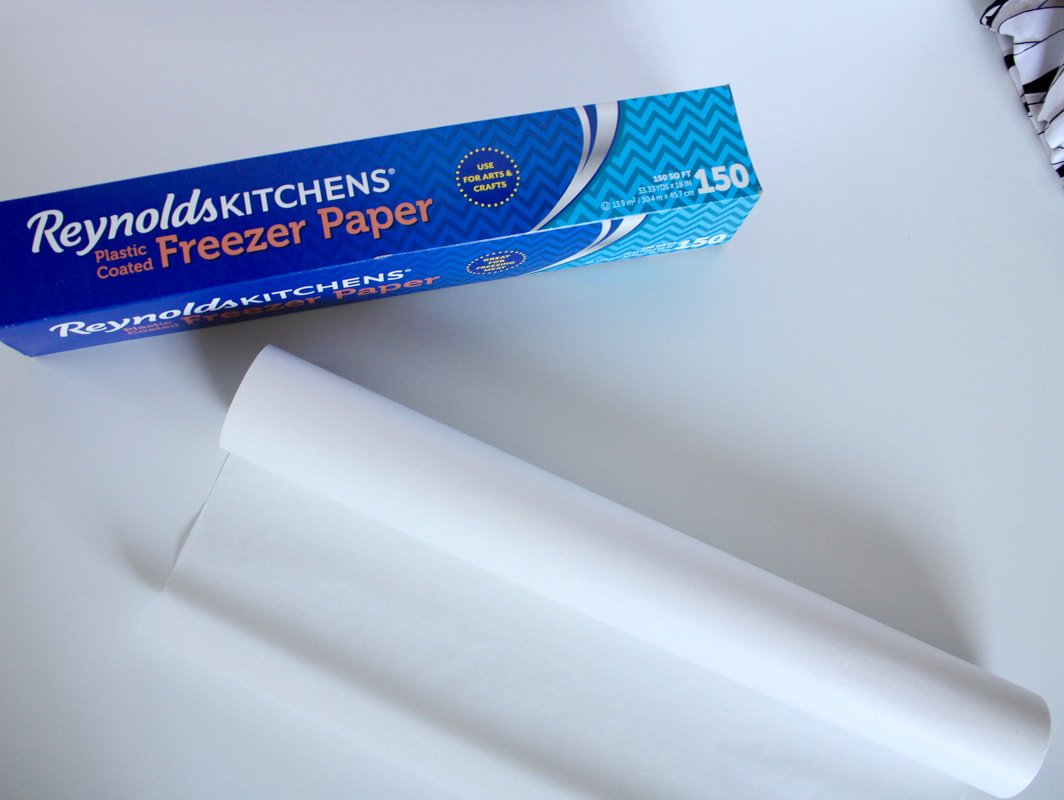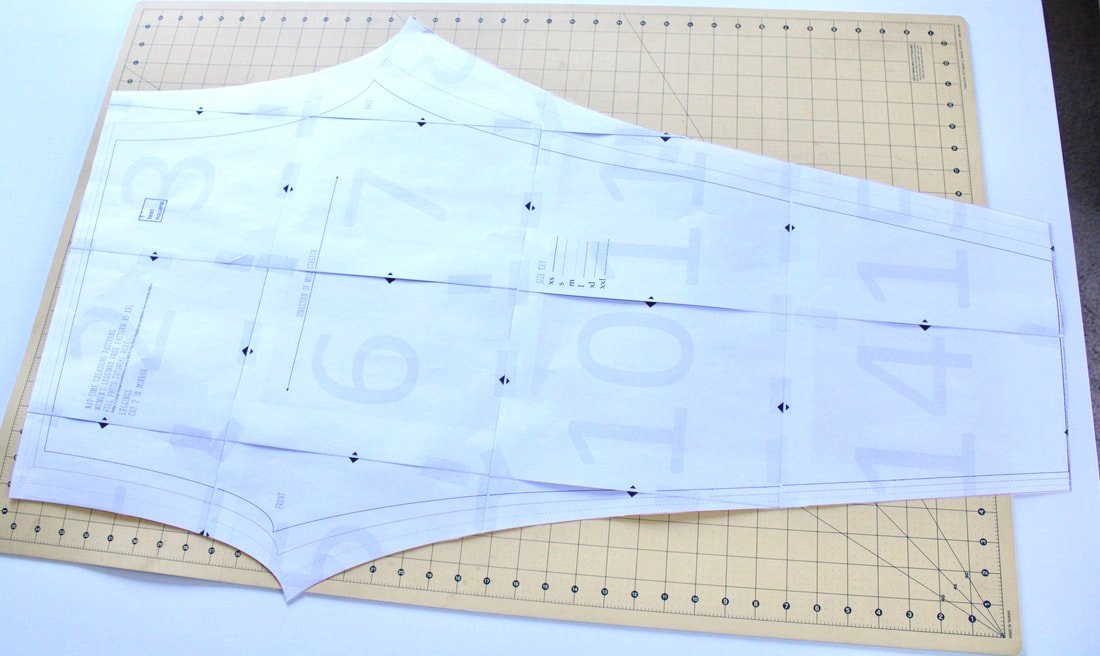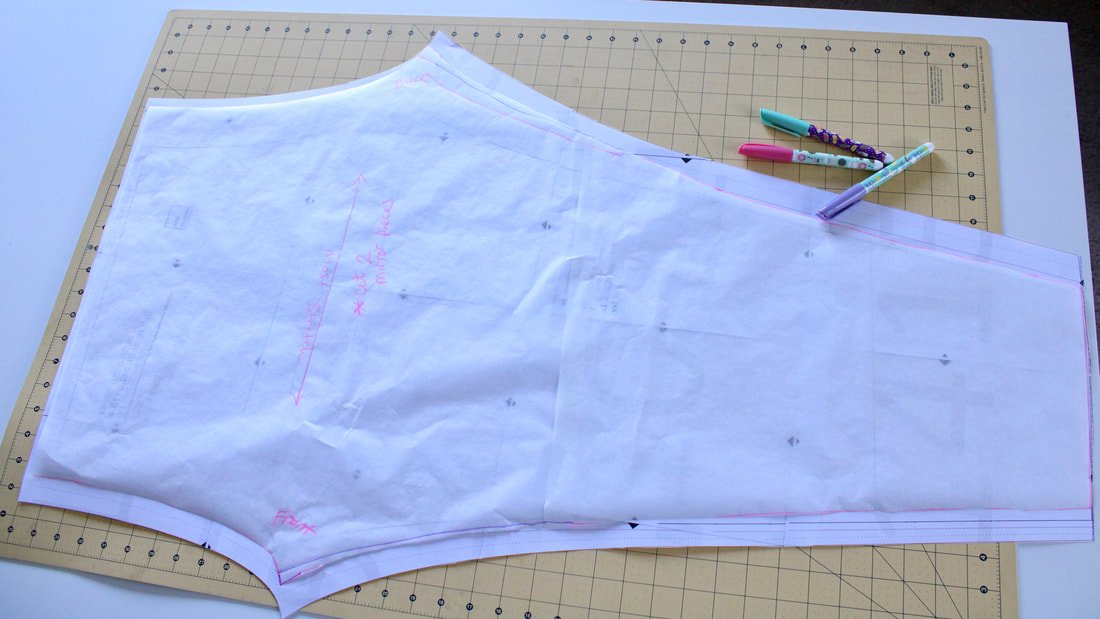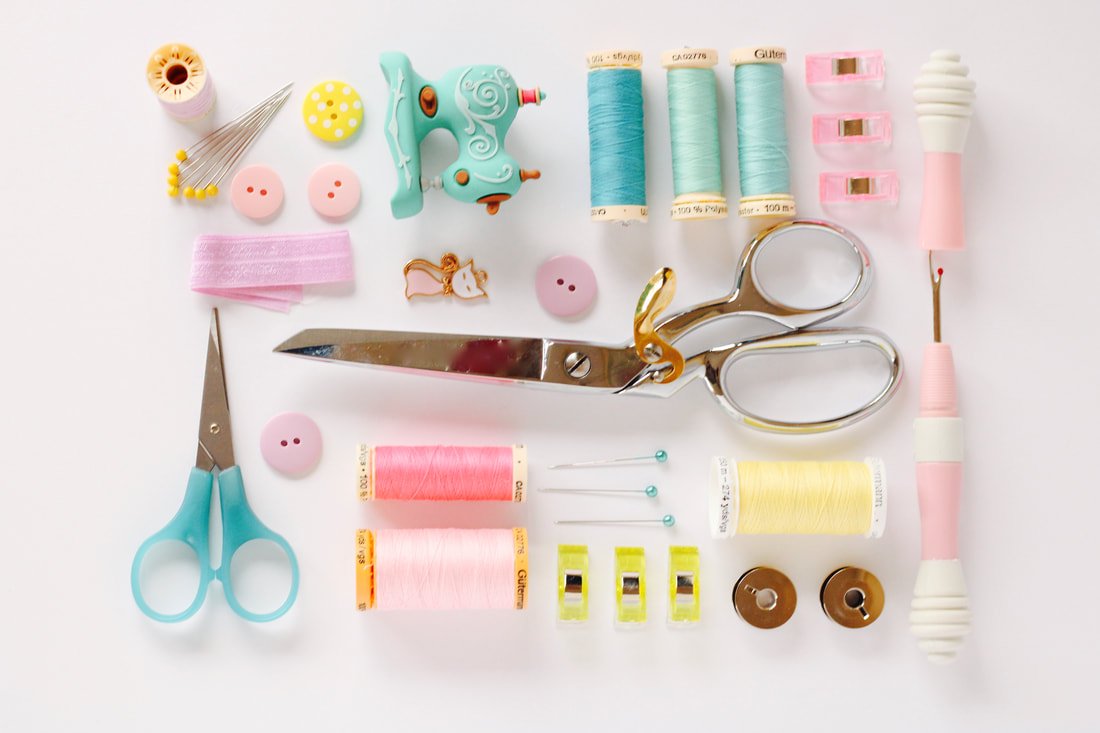
Pattern Reviews, Sewing Hacks, Tips & Free Patterns
Sewing Blog Besties
Butterick B6453: The Easiest Dress to Sew
Butterick B6453 dress sewing pattern. Beginner-friendly vintage style dress. Sew an easy dress with lots of vintage style.
If you need a break from difficult sewing projects, I encourage you to grab the Butterick 6453 dress pattern. It was easy and fun to sew! The only timely adjustment I needed to make was an FBA. After that was sorted out, it was all downhill.
This dress is fluffy and full, no need for a crinoline underneath. The princess seams are flattering. The straps are perfectly positioned. And, the back zip is a cinch. What are you waiting for? Grab the pattern and let's get started!
Supply List
A whole lotta fabric, this dress is a fabric hog. 4-5 yards is needed
Interfacing
Matching or contrasting thread
Sewing machine and notions
Serger, pinking shears, or a zigzag machine to finish the raw edges
16" or longer zipper
Seam ripper because... sewing
Rings and sliders for adjustable straps
Sewing Notes
This dress is super easy and only has 10 pattern pieces! This was wonderful news because I made the Hooded Princess Coat before this dress and that was a beast. Read the post if you've always wanted to make your own raincoat. Gertie did a wonderful job with the pattern.
I chose double-faced linen. It was a little heavy for this exact dress but, I love it nonetheless. It'll be warm enough to wear in the fall paired with tights and a sweater. I suggest using regular linen, cotton, gingham, etc. Check the pattern envelope for fabric options.
Shorten or lengthen to fit your torso. I shortened the bodice pieces by 1.5" because I have a short torso. I could have gone a little shorter.
Size down 1-2 sizes at least. I sized down but, in the end, the dress was still too big. Four inches on each side, too big! I have to take in everything. Ugh. Honestly, I threw on a little belt and it was fine to wear. But, I plan on taking in the side seams, princess seams, waist, etc. Cue the tears.
Widen the straps if you wear larger bras. Us gals with bigger cup sizes know the wide bra strap game all too well. I made my dress straps 1" wide and they cover my bra straps perfectly.
Trace and cut out all your pattern pieces. Make sure to transfer the markings and notches. I didn't trace the pocket or skirt pieces onto new paper. Sometimes I get lazy and use the actual pattern tissue. Please don't tell the sewing Gods on me.
Staystitch your neckline, don't skip this step.
Sew the darts.
Then, sew the princess seams to the front bodice piece. I find it easiest to clip the front piece a little to help with the curve if needed. Also, it's easier to sew with the flat piece on the bottom. Go slow and adjust as needed; you'll have a pucker-free seam in the first go.
After the princess seams are sewn, match the side seams with the back pieces. Sew from the waist up.
Here's a Tip:
If you have an old bra lying around that no longer fits, cut it up. Use the metal hardware for your dress straps. I save all my metal hardware from old bras.
Notice my blue fingers? I've washed this linen three times and it still makes my skin blue. Ack!
Pin your straps into place and try the bodice on before stitching the straps on. I waited until the dress was fully sewn before I did this. The linen weighs a ton and I knew the skirt would pull it down. Yay, gravity! My fabric was too thick to make adjustable straps so I ended up sewing the strap ends onto the bodice. But, I love adjustable straps, even though the dress will only get worn by me. :)
Here's a bra hack post if you're interested in DIYing your bra.
Gather and sew the skirt's front and back pieces together. I didn't take any photos of this because it's pretty easy.
Zippity doo-dah! This pattern calls for a lapped zipper. I'm still on the fence about whether I like doing lapped zippers or not.
Press the right side under 1/2" and press the left (lapped) side 5/8" under.
Pin the right side and sew down from the top, using a zipper foot. Go slow to avoid any mother puckers. ;)
Pin the left side starting at the waistband. You want that area to match up. Then, pin upwards and downwards making sure the raw edge will be hidden after it’s sewn. Go slowly starting from the top and sew down. Swivel and sew a few stitches across to seal the end of the zipper.
Ta-da! Your zipper is complete. A white one was used because that's all I had on hand. I was doing a "no buy" sewing challenge. I normally would have used a navy blue one but, the white still matches. Sorta. Ha!
I eventually lost the challenge after a fabric cutting mistake though. Insert eye roll.
Butterick 6453
All that's left to do is sew the hem. Choose an easy hem, turn up the raw edge 2", and then turn it up again.
So, that's it. This is the easiest dress pattern I've ever come across. Are you going to make one? Do you know of an even easier vintage-style dress pattern? Heck, my caftan was more involved than this was. I assumed a caftan would be easy. Nay-nay!
Thanks for hanging out today. If you are looking for a few other pattern reviews, click here for the Ginger Jeans review. Or, here for a Cheongsam sew-a-long.
Happy sewing!
Annette
Hooded Princess Coat by Charm Patterns
Gertie’s hooded princess coat sewing pattern review and tips. I love the pattern and it sews together beautifully. With rain resistant fabric and the added hood expansion, it makes the cutest vintage style raincoat. It’s a little red raincoat. Not beginner friendly, but a seasoned sewist won’t have any problem making one.
My Little Red Raincoat
This coat is a Patreon expansion pack of Gertie's Princess Coat sewing pattern. Sew your own raincoat to keep yourself dry and cute. It starts with the Princess coat, then you add the expansion pack for the hood.
Do you ever find yourself needing a garment, but you can't find one out there that suits your style? This is that garment. I have a few hooded coats but, they're wool or fleece. Not really a raincoat per se. And, I have two garment obsessions: coats and shoes. I need all the coats and I need all the shoes. Ha!
I think coats and jackets are the best accessories because they add warmth- especially if you're always cold. And, they add fabulousness to your outfit. Imagine yourself wearing a T-shirt, jeans, flats, and red lipstick. A normal little everyday outfit, right? Then, add a black velvet coat and your outfit gets a major upgrade!
That's what coats and jackets do for me. I guess they're my jewelry. So, when Gertie came out with her Princess Coat pattern, I had to grab it. A month later she rolled out her Patreon expansion pack to make a raincoat. I was sold! I needed a raincoat.
Fast forward 2 years and I still hadn't made my beloved raincoat. First of all, rainwear fabric was something I had zero clue about. And, second, I sew on a budget. I didn't have hundreds of dollars to drop on fabric for a coat I would wear maybe twice a year. Thanks, Southern California for never raining. Living in the desert, we don't get a lot of rain but, when it rains, it pours. Hello, flash floods. And, hello Little Red Raincoat.
“It never rains in Southern California”
Tracing and cutting the outer fabric. The kitchen table was the best place for this. It’s a lot of yardage.
This post isn't a How-to because it's an expansion pattern for Patreon only. Gertie is gracious enough to spoil her Patrons with all her marvelous patterns. If you're interested in making a vintage-style raincoat, Grab the pattern here. Then, join her Patreon here. It's definitely worth it. We get a new pattern each month and honestly, it's too many for me to keep up with. But, I choose which patterns are "need to sew now" and which are in the "someday" category.
Anywho, I did have a few little areas I ran into trouble with so, I'll share my input on those. But, other than that, enjoy all the photos of my Little Red Raincoat. Yes, I named it. :D
No rain, but it was a frigid February day.
Why did I start sewing the raincoat after 2 years you ask? Well, remember this post on January Jeans? My sewing friend on Instagram was still talking with her jeans sewing group. They decided to do a #JacketJanuary. I was invited and thank goodness for those ladies! They welcomed me and I made new sewing friends. Yay!!
One gal finished her jacket on time and a few were waiting for the last touches by the end of January. We met every Monday for a fun Zoom call. the group kept me going and I was finally able to get my coat finished. It wasn't finished on time because I was undecided on whether to use buttons or snaps. In the end, I decided on snaps. Buttonholes and water don't go together so nicely
Snaps are usually easy but not this time. I put the first one in upside down. Cried (not really but, I wanted to). Then, put another one in wrong. Ha! I don't like snaps (anymore) or buttons. Face-Palm!
Isn’t my pink lining fun? My coat can double as a Valentines Day coat/outfit.
Let’s Talk Fabric
One of the ladies in the sewing group told me about trench coat fabric. We had a quick chat about that and I had an a-ha moment. It was mind-blowing, believe me. I ended up buying trench coat fabric and it was wallet friendly too. I found some beautiful red polyester twill from Mood Fabrics. They shipped quickly too. According to my measurements, I needed 8 yards. Well, technically I needed 7.5 but, when you order online, you can only order in whole amounts. Fun story, I ended up with almost 4 yards left over. So, now I have no clue what to do with all that leftover rain-resistant fabric. Ugh! I think camping table clothes and bench covers?
The fabric itself is nice. It was a dream to sew with but, it wrinkles very easily. When I'm running through a hurricane looking fabulous, I probably won't mind my wrinkled mess of a raincoat, though.
The lining is poly china silk I bought online from Wholesale Fabric Direct. It's a blush pink color and I ordered 8 yards of that as well because... well measuring. I have tons left over, over 4 yards. The leftover lining fabric didn't bother me because I can use it to line wool pants or anything else in the future. Plus, it only costs $2 a yard. LOL! No tears were shed over that. The rainwear fabric was a different story though. ;)
Tracing the lining pieces. Again, at the kitchen table.
Notions and Potions
No potions except coffee. Lots of coffee.
The thread and needles I used were simple and nothing fancy.
I bought 3 spools of all-purpose red polyester and 1 spool of all-purpose poly pink thread. I read other people’s comments about how much thread they used for the Princess Coat and I didn't want to run out. Well, I didn't even use a whole spool of the red. Ha! I always use red thread because it's the best color in the whole world, so no worries about that.
I sewed my outer coat with a regular 80/12 universal needle. It sewed through the rain-resistant fabric flawlessly. This fabric held onto the holes it was given so, I was cautious but, in the end, just went for it. Backstitching on every seam was fine, no issues there.
For the lining, I knew better. I used a Microtex needle to sew all the pretty pink seams. When it came to sewing the outer and lining together in a few spots, I used red thread and the universal needle. No issues, no skipped stitches, and no bird nests. Yay for nice, cooperative needles.
I used a tracing wheel and wax paper for the outer and lining pieces and cut everything with scissors. It was nice to open the leaves on my kitchen table and lay out the fabric and pattern pieces. My cutting table in my sewing space was not quite long enough for this project.
Adjustments
After making my muslin, I decided I wanted a little more room in the tailored sleeves. I used a 1/2" seam allowance instead of the recommended 5/8". I graded it up when I got to the armpit area. This kept me from having to make other adjustments in the armscye area.
I measured at a size 8 for the coat but graded down at the side seams, to a size 10 at the waist. I love that Gertie gives us different cup-size pieces. The fit was exceptional. I love sewing for my own body. Talk about body positivity. :D
I also adjusted the length as I cut out the skirt pieces. Instead of shortening the skirt length at the shorten lines, I simply cut the length at size 2. This was probably the incorrect way, but it worked for me. Sometimes I like shortcuts.
I added a hanging loop in the back. Cut a 2" wide by 4" long piece out of the outer fabric. Fold in half RS together and stitch with a 1/4" seam. Turn it inside out and baste it to the hood. A hanging loop for a raincoat is a must, right?
I topstitched all of my outer seams. I sewed the center back seams to the left and the other ones to the right or left, depending on each seam. I thought this would help with the rain seepage as well.
Pretty pink pockets.
Issues I Ran Into
The Instructions were a little wonky in areas which isn't normal for Gertie. She's usually spot on. However, I did run into an issue with pattern piece #15, the skirt front facing. Her video says she skipped the hem facings, fine. But, she still had the front facing on her raincoat and it didn't say in the extension instructions how to add this. The booklet instructions were on page 44 but were different. So, I unpicked some of the waist area and attached it to the bodice lining unit, albeit the wrong way, but I got it done.
I had trouble figuring out how to add the neck facing because I hadn't had enough coffee or something. Below, is how it should look. The collar facing is cut with the outer fabric and sewn to the lining bodice at the back collar. It went on sorta upside down. Like I said, maybe I didn't have enough coffee.
Bodice lining.
Neck facing is clipped and ready to sew.
Neck facing and back bodice lining.
I used muslin for the back and serged the edges.
Hemmer Time
Okay, when it's time to hem, be sure to let your outer and inner hang for 24 hours before you hem them. Fabric cut on the bias is no joke. My outer didn't stretch out but, the lining did need a little trimming and evening up.
After hemming 4,000 yards of fabric and removing approximately 300 wonder clips, your hem will be done. Gertie preferred a narrow hem for the raincoat. The way she does it is nice too. Sew along the raw edge with a 1/4" seam allowance, flip it up and under, and sew again. Super easy. It is also nice for a circle skirt hem, you don't have to worry about any puckers. ;) I hemmed the outer and lining before I put them together. I liked hemming the outer and lining separately. Easy and no stress.
I went back and shortened the lining hem length another 1/2" inch. I didn't want to get caught with my lining hem showing. Could you imagine?! Gasp! If you read this before you make your coat, hem the lining 1" shorter to begin with.
The sleeve hems were easy to do too. I didn't attach them as Gertie recommends. Hand sewing, no thanks, and on rainwear fabric especially. I prefer the bagged-out sleeve hem method. You take the sleeves and pull them inside out, fold over the lining cuff 1/2" or so, match seams up, and then sew. I didn't take photos but, here's a website that shows you how. It is my favorite way to sew sleeve cuffs and if you look at your RTW coats and jackets, they probably did it this way.
The pretty pink lining.
You can see ripples in the bodice in the photo below. The water-resistant fabric didn't take well to interfacing. I decided to leave it but, might rip it out later in life. We'll see.
I top stitched over all the seams in hopes to keep the rain out.
Let it hang for 24 hrs.
Ooh la la, I love my lining.
Final Thoughts
I'm so happy with how my Little Red Raincoat turned out. It was such a fun sewing project. Thank you to the #JacketJanuary sewing group, you ladies rock! I can't wait to sew up a few more jackets and coats using The Princess Coat pattern from Charm Patterns. Gertie, you really outdid yourself with this beautiful pattern, as usual. If a hooded coat scares you, don't let it. The hood was the easiest part. It's a nice roomy size so my vintage-style hairdos will fit inside without getting messed up. Yay for that!
She gives quite a few sleeve choices. I want to make a mustard yellow coat next. I need some fun tweed to make a cropped jacket with a dare I say, faux fur collar! Perhaps some light pink boiled wool with a black fur collar too. Hmm...
I have no clue what to do with almost 4 extra yards of red rainwear fabric. Any ideas? Share them in the comments below, please. I need ideas. LOL
Scroll down to see more photos of my glorious coat without rain.
Thanks for following along with my coat journey. Now, if you could all send some rain my way so I can try it out, that'd be great.
Happy sewing,
Annette
Simplicity 8505 Caftan Sewing Pattern
Have you ever dreamed of floating around the house in a vintage 70's caftan? What about in your beautiful backyard? I vote yes for both! This Caftan sewing pattern is the only one you need, it's vintage and authentic.
Way back in high school, I borrowed a caftan from my mom's friend to wear to a dance. The 70s wasn't the theme but, I wanted to wear it. It felt so silky and soft while I wore it and danced all night long, with friends.
When I saw this pattern via an Instagram friend, I knew I had to snag one for myself. She looked so fabulous in hers, and I knew I needed that pattern in my life. I hope you grab the vintage reproduction pattern and make a caftan, too.
Oh hi there! I’m just over here living my best 70s life.
I ordered the Simplicity pattern 8505, a 1970s caftan pattern from an Etsy shop. After searching my local sewing shops for the perfect fabric, I decided to order that online too. If you make this, I recommend looking at fabric in person first, to give you ideas. It's fun to feel the drapey fabrics. Who doesn't love touching all the fabric? Are you ready to make the comfiest dress ever?
Let's get started.
Here's what you'll need. I also wanted to share a few tips and ideas for you to try, if you want.
Supply List for View B
Simplicity Pattern 8505
3.5-6 yards of fabric (depending on your size)
Interfacing Scrap
2 yards of twill tape or ribbon, 1/2" wide
1 1/2" button
Matching thread
Microtex or Sharps sewing needle
Sewing machine + all the notions (scissors, clips/pins, rulers, etc.)
*Optional: Fleetwood Mac playing in the background ;)
Tips for making this pattern:
This pattern doesn't have pockets, but I would add some. Use another in-seam pocket pattern from a pattern you already own. Try the dress on after you sew the shoulder seams to see where you'd like your pockets to be.
When you sew the front to the midriff, to the yoke piece, make sure to match the center seams. I didn't pay close enough attention and wished I had. Use a water-soluble marker, Frixion pen, or another writing tool that will disappear to mark the centers.
Measure, measure, measure! I measured myself and made a Large. It fit like a tent. I cut the side seams smaller, but it fits bigger than I'd like. You might need a smaller size than you'd think. ;)
Instructions:
Measure yourself and write your measurements down. Read the finished measurements on the pattern tissue to help decide the correct size for you. The big four pattern companies usually give a ton of ease in their patterns. You want a caftan, not a tent.
Cut out the pattern pieces. Trace the pieces onto the fabric and cut them out. It's a lot of fabric so, a nice big workplace such as the floor is great for this part.
I usually trace onto pattern paper but, this style is very loose and I knew I wouldn't need to make fitting alterations.
**You will have to tape the front (5 and 5A) piece to an extended piece. Match the stars and tape them together. You'll do the same for the back piece (8 and 8A).
The pieces were very large so, I used pattern weights and cut the fabric without tracing. Gasp, I know! Trace the neck-facing piece though.
Time to sew.
Attach twill tape ties and sew reinforcing stitches at the corners of the front pieces. Clip to the corner but, not through the stitching.
Sew the front center seam.
Sew the front center seam. I serged the seam after and pressed it to the side.
Gather those tiny ruffles.
Sew 2 rows of gathering stitches using a 4-5mm stitch length, between the notches across the front. Pull the bobbin thread to lightly gather the front. It helps to leave long thread tails to pull the gathers.
Press down along the fold line on the front. This will become your front V neckline.
This is where I had the most difficulty. Gathers are easy but can be a pain in the you know what. So, go slowly, check twice, then sew.
Pin the yoke to the front pieces matching all the notches together. Sew and press the seam downwards.
Serge or sew the edge 1/4" under the midriff pieces. Press along the fold line.
Pin the front midriff and yoke piece to the front pieces.
Make sure to match the center seams. Sew the bottom part of the yoke to the gathers first, then sew the sides. I didn't do this and found it a tad difficult to fit. Again, make sure you line up the center seams.
Grab the back pieces and neck-facing pieces.
Stay-stitch the back neck.
If you haven't already, apply your interfacing to the neck facing at this point.
** I left the button off and sewed a solid back seam. You can sew the button closure or not, it's your choice.
After the back seam is sewn, sew the neck facing onto the back matching the seams. Press open or to the side.
Yay, you're almost done!
Sew the shoulder seams, and press.
Then, sew up the side seams. Start from the hem and go up to the notch/dot.
Try it on at this point to see if you want your armholes smaller. I ended up sewing 7" from the top for my sleeve opening. This was a perfect amount for my arms.
Hemming the caftan.
Last but not least, it's hemming time.
If you're on the shorter end, you'll need to whack off some serious length on the bottom.
Hem the sleeves. Fold and press 1/4" under, then 1/4" under again, and topstitch.
The bottom hem was an issue for me. I measured (I usually just eyeball it) and, it came out wonky. I don't have any magical words of advice for you on hemming. Sorry. :( I used my dress form to pin the hem and then sewed it. And it was perfect in the back but several inches too long in the front and sides still.
So, the caftan dress sits in the timeout corner for now. I could hold it up while I walk around but, that's frustrating and not very chic or glamorous. Some day I'll rip it out, cut it, and re-hem it. Maybe next spring when I get the itch to float around in the warm sun, in my backyard again.
Meanwhile, enjoy some photos of my too-long caftan. :)
Thanks for hanging out today! As always, if you make one, please tag me on Instagram @sewingtothemoon. I'd love to see your fabric choices.
Happy 70s sewing,
Annette
Sewing the Ginger Jeans
Sew your own high waisted pair of jeans. The Ginger jeans sewing pattern by Closet Core is great. It’s beginner-friendly as well.
Ginger Jeans! I made a pair and love them. These were fun to sew and I learned a few things along the way.
Living in comfy clothes seems to be the new norm. Cozy pants especially. Fleece-lined leggings, flowy lounge pants, soft cotton harem pants, and PJ's of course. Gimme all the couch surfing pants.
Jeans don't really fit into the cozy pants category but, I'm going to talk about them anyway. Jeans are something I rarely reach for when I get dressed in the morning (afternoon?). If I do wear jeans, I reach for my Calvin Klein high-waisted skinny jeans. They fit my body like a leather glove. So, when my friend told me about the January Jeans sew-along, I jumped on board!
The Jeans Fitting Journey
This post is a little different than my usual pattern posts. Hundreds, if not more, Ginger Jeans tutorials already exist. So, I wanted to do something different. I'm taking you through my jeans-fitting journey. Beware though, it's gonna get ugly before it gets pretty.
The January Jeans sew along was hosted by some lovely ladies in the UK, on Instagram. They set up a Slack app group for all of us to post and share photos to. We had live Zoom calls every Monday and then we were put into smaller Zoom groups. It was a whole jeans journey. We helped each other with fit issues and got feedback on our own jeans.
If you've ever wanted to dabble in jeans sewing, you really need to get the fit correct. Here we go!
Materials Needed
First, you need a pattern. I chose Closet Core's Ginger Jeans pattern in View B. It's a skinny leg, high waist pattern. My favorite style of jeans. But, you might want a low rise, wide-leg style. Scour the interwebs for a pattern that fits your specific taste.
2-3 yards of Denim (check what % of stretch you'll need too)
Cotton fabric for pocket linings
Interfacing
A jeans zipper (*it needs to be a metal jeans zipper so the pull will lay flat against the pants/ your body)
Denim thread, regular thread, topstitch thread (optional)
Jeans needles
Fabric for a muslin (preferably denim)
Jeans button
Rivets (optional)
Awl and hammer for inserting buttons and rivets
Rulers, a chalk marker, scissors or rotary cutter, etc.
Sewing machine
Patience and time
Serger for finished seams (optional)
Make a Muslin
Jeans sewing is an easy process. I've made a few pairs of “jeans” from Gertie's book, Gertie Sews Vintage Casual. However, this was my first time making a zipper fly and I was a little bit intimidated. Sewing your muslin fabric is a great way to practice a new skill or technique. It wasn't hard at all!
I really do recommend sewing a muslin first. It's a trial run. You can rip out seams, cut fabric to make space for your hips and legs, and practice topstitching. Use it as your "scratch piece of paper." Through my first muslin (that I made with 0% stretch fabric), I found that the so-called high waist wasn't high enough for me. My first adjustment would be to add length to the rise.
The first muslin fit, almost. I cut out a straight size 12. I like to cut one size that is the closest to my measurements and go from there.
The jeans were snug around my bum and tummy area. An easy adjustment would be to grade up to a size 14 or 16 in the waist area. However, I knew I was going to add height to the tummy area.
Here’s what I did:
Added 1.5" to the length of the rise, to create an authentic high-waist pair of jeans.
Full tummy adjustment. This adds room for those of us with mom bellies or bloaty bellies -that's a very technical term. ;)
Took out length in the legs but, not more than an inch. I'm short but, I have long legs. Thanks to weird genetics!
Low bum adjustment. Although, I didn't end up needing this in the end.
Second Muslin
Yes, if your first muslin was a total bust, do a second one. You could easily unpick seams and go from there. However, I was changing the pattern, so I needed a second muslin. The second would be a wearable muslin pair of jeans. I grabbed some clearance denim, made my adjustments to the pattern paper, cut the new fabric, then sewed the second pair with the adjustments.
And WOW! What a difference from the first muslin. I loved the waist height. I loved what the full tummy adjustment did for me. I did not love the low bum adjustment because it added excess fabric in my rear and in the back of my thighs. You can see all the bulk in the photos below. This pair was cut in a size 12 just like my first muslin. You can see how my pattern adjustments really changed the fit.
Leg Twist Hack
I had a serious leg twist issue with one leg. I followed the cutting directions to a T, too. I cut on the single layer and alternated each leg just like the pattern recommended. Ugh!
I unpicked the inseam and side seams and sewed them back up. No more annoying twisty leg. So, if you do have this issue, I recommend unpicking the seams. Sew the inseam by starting at the cuff of one leg and go up. Backstitch at the crotch seam. Then, sew the other leg by starting at the cuff and sew up to the crotch. This may or may not be the correct way but, it fixed my issue.
Photos below are of my wearable muslin pair of Ginger Jeans. I've worn these around a few times and they fit well enough. The denim only has 1% stretch while the pattern calls for a 2%. They are a little stiffer than I'd like but, no seams have popped open when I bend over. Yet! LOL
I actually like the fit of these better than my final pair. Shhh, don’t tell anyone.
One back pocket is lower than the other but it didn't bother me enough to re-do it. Shhh, it'll be our little secret. ;-)
There is extra fabric and bagginess on the back thighs because of the low bum adjustment. It wasn't needed. I guess I have a high bum. Who knew? Hahaha!! And again, it didn't bother me enough to rip open the seams and fix it. This pair was supposed to fall into the "good enough" category. And they do just that.
Red cotton fabric was used for the pockets, you can see it peaking out a bit. I also did red bar tacks in place of rivets.
Whew, I hope you're still with me. Now, it's time for the final pair!
Final Pair of Ginger Jeans
I chose dark grey denim for my final pair of Ginger jeans. I love a red accent too so, I used red topstitching in place of rivets and made red pockets again.
For the final pair, I did the adjustments that seemed to work best for my body.
Full tummy adjustment
Added 1.5" to the rise to create an authentic high waist
Shortened my leg length by 1 inch
Placed the pockets higher to accommodate the rise adjustment
I love the fit so much! My bottom half isn't very curvy due to my apple-shaped figure. Therefore, these jeans fit so much better than any RTW pair I've ever owned. They fit my legs and waist perfectly. I'm truly happy with the fit.
I’m pretty excited about my new jeans!!
Pastel Denim
This pastel peachy denim will make a perfect pair of Spring jeans. I might even roll the hem up and wear them with flats. A flowy white top and large straw hat too, yes, please!
I love the 3D stitching on this denim. It's not something I've ever seen. I'm not sure if I'll do a white or pastel yellow contrasting thead.
Now that you followed me through my fitting fun, are you going to make your own jeans? I really do encourage you to make a pair. I've made pants before but they didn't have all the stitching detail. These taught me more about fitting your own body and how perfecting the fit really does make all the difference.
If you're still on the fence about jeans making, maybe these trousers are more your speed. They're wide-legged and flattering on everyone.
Or, would you rather stick to an easier project? Sew up a little something here, here, or here.
Either way, go sew something! You deserve it! :D
Happy jean sewing,
Annette
Sew Custom Fit Leggings
Sew a pair of custom fitting leggings for yourself or your little one. This is simple pattern drafting.
Do you love wearing leggings? How about sewing your own leggings? Yes, no, maybe? We are 100% team leggings in this house. I don't buy my youngest daughter any other kind of pants. Heck, they are even my go-to pants (read: secret pajama pants) to wear out of the house. So, if you aren't on board with making your own leggings yet, you will be after reading this. At least, I hope you will.
If you're not interested in making leggings for yourself, scroll down to the bottom. I share a tutorial I use for making little kid leggings.
If you've been dying to make leggings that actually fit your body, look no further. Grab this FREE pattern to get started. You'll be cozy and cute in no time. Lately, simple patterns have been more my jam. Take all your measurements and write them down on paper.
I measured my waist, hip, knee, calve, thigh, and ankle widths. The sizing put me into a size Large waist, Medium hips, and narrowed down to an X-Small in the ankle department. I love my weird body. Buying leggings from the store is never fun because they are baggy in all the wrong places. You might be the exact opposite. We're going to make these leg prisons according to your own measurements. Wooo!!
My original plan was to follow a tutorial and draft my own pair. Well, my brain couldn't do all the math. So, in the end, I found this pattern that worked perfectly for me! Let's get started.
What You’ll Need
Just over a yard of knit fabric
Thread
Measuring tape
Stretch or ball-point needle
Twin needle (optional for leg hem)
1 inch thick elastic for the waistband (I prefer non-roll)
Sewing machine that can do a Zigzag stitch
Serger (optional)
Roll of tracing paper, medical paper, or freezer paper (my preferred paper for tracing)
Pencil and pens for tracing
Seam ripper because, let's be honest...
Tape for taping pattern pieces together
Printer to print out the PDF pages
All the other sewing notions you usually use ;)
Pattern Set-up
Click here for the FREE pattern. You will add to cart but, it is a free PDF. After you "purchase" you will be able to print out the pattern.
Match the lines and arrows, then tape everything together to form your pattern. Figure out where your measurements lie in the legging pattern size range. You might have to grade between sizes. Grading is easy and doesn't take any extra time. You simply blend the sizes to fit your unique body shape.
You can use a highlighter or other light colored marker to grade your sizing, directly onto the pattern. Or, Take your tracing paper and lay it over the pattern. Trace your new pattern size. Doing this saves the PDF for future use or if you decide to make a smaller or larger size for a friend.
I suggest making a muslin before cutting into your beloved fabric. If you have stretch fabric you're not in love with, use that. you want to get the length correct too. If you're taller or shorter, you will need to make adjustments accordingly.
Sewing the Leggings
Sew each inner seam with right sides together. You can use your sewing machine or serger for this.
Then, take one leg and turn it right side out. Place your arm back through and feed the leg through the other leg, making sure right sides are touching. Straighten the leg, matching the seams together. You're going to sew the large "U" shape crotch seam from one side to the other. Use pins or clips to keep the layers from shifting around. You can use the sewing machine or serger for this as well. After the crotch seam is sewn, pull out the legs.
If done correctly, it should look like a pair of pants. If not, grab that seam ripper because something went wrong. Uh-oh!
Perfecting the length
Try them on. They should fit nicely.
If they fit too snugly, use your seam ripper to let out the seam in the snug areas.
If they fit too loose, go back over those spots with the sewing machine to make them fit more snug.
If the length is too long, you can shorten them at the ankle hems. If you want them to have a lower rise, shorten the waist. If you need more length, add those inches to the pattern.
All you have to do is sew the hems at the ankles and put in your elastic waistband. Comfy and super simple.
Hopefully, you found the PDF pattern easy to print out, tape together, and use. I will be making more leggings for myself soon.
I LOOOVE leggings!! And, now they will fit my funky shaped bottom half of my body. Hahaha!!!
Will you be making leggings for yourself? If not, keep reading. I include a tutorial for making leggings for a little one.
Leggings for Little Ones
Maybe leggings still aren't your cup of tea. But, they are great for kids.
Follow this fun tutorial on how to make a pair for a child. My youngest daughter wears leggings every day. They are the only leg prisons she allows in her dresser. When we go camping, she may or may not wear the one pair of jeans we keep in our RV for her. Yep, she's that committed. Ha!
What You Need
The tutorial
Elastic for the waistband
1 Yard of knit fabric
Sewing machine or serger
Thread
Ballpoint needle
All the regular notions
A small child ;)
You use a pair of leggings that already fit or are too short. You trace off the pattern based on that pair of leggings. Add length if needed. Sewing them is the same as the adult pair I made. Easy-peasy. I've made quite a few pairs for my daughter. She loves them. Mom-win!
So, that's it. Go make some new leggings for yourself and everyone around you. Hooray for comfy pants!!
Check out my Batwing top here. It's fun and makes a quick costume! Oh, and it's perfect for those chilly October evenings.
Thanks for hanging out today and happy cozy sewing,
Annette






